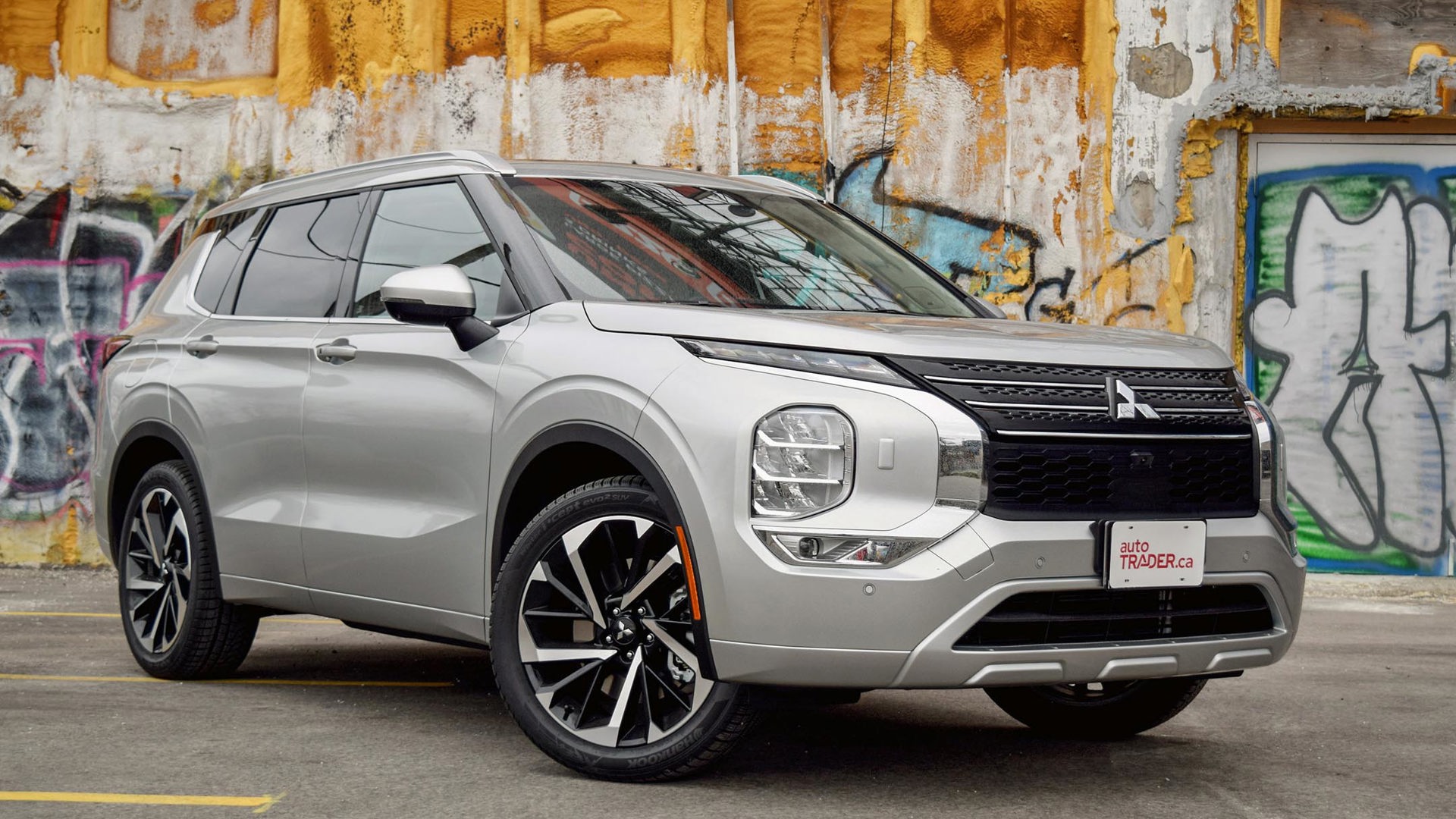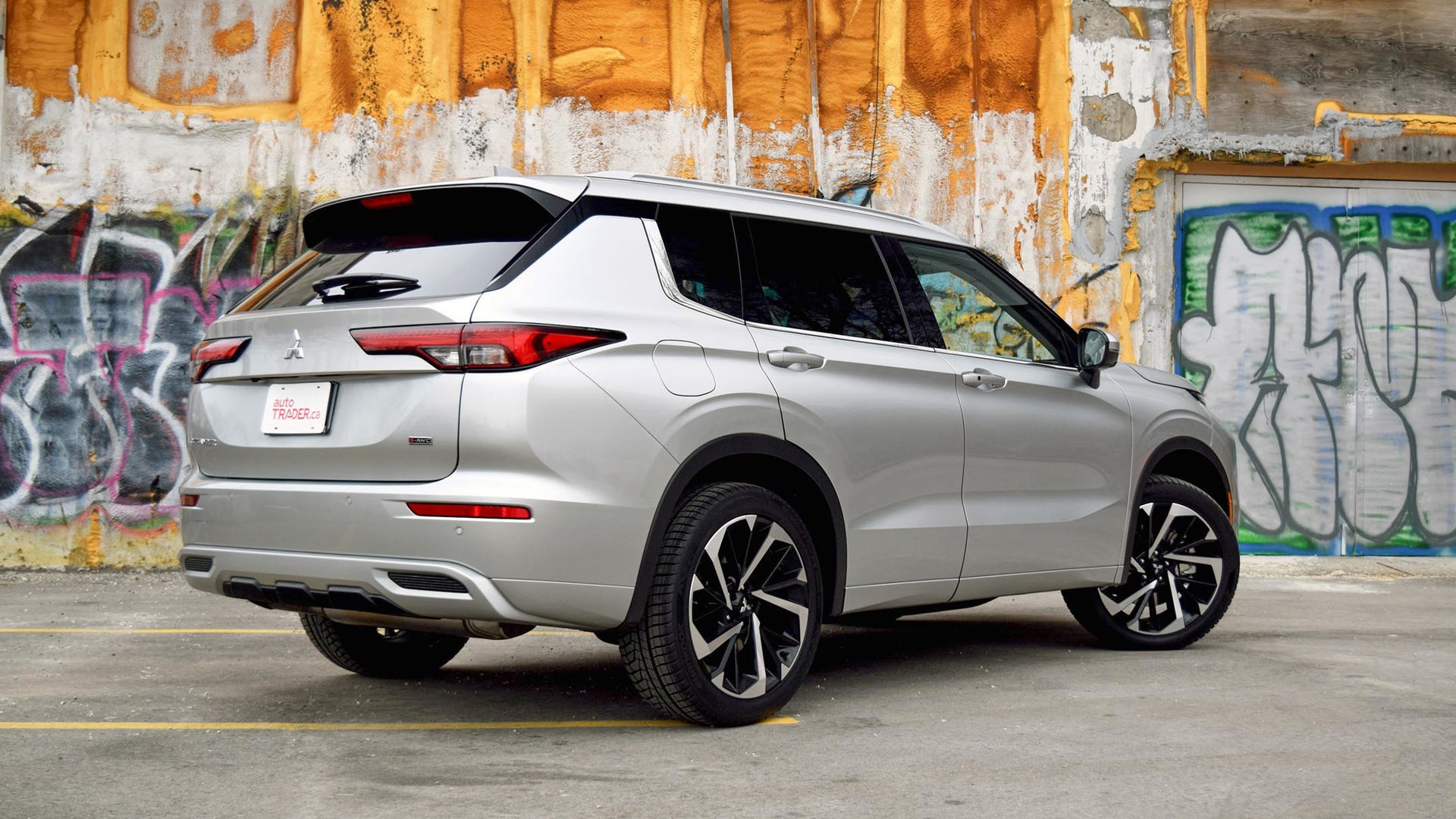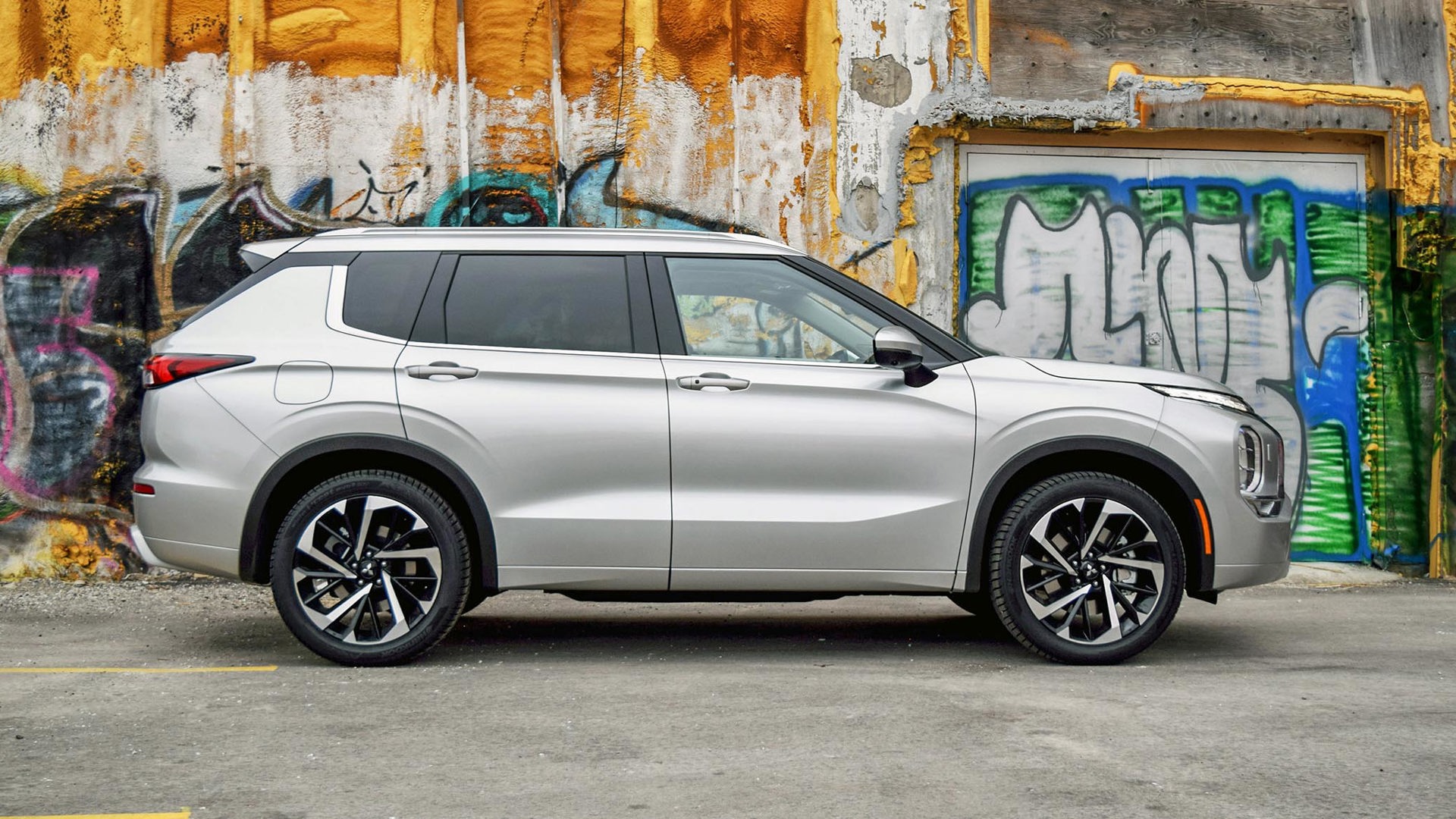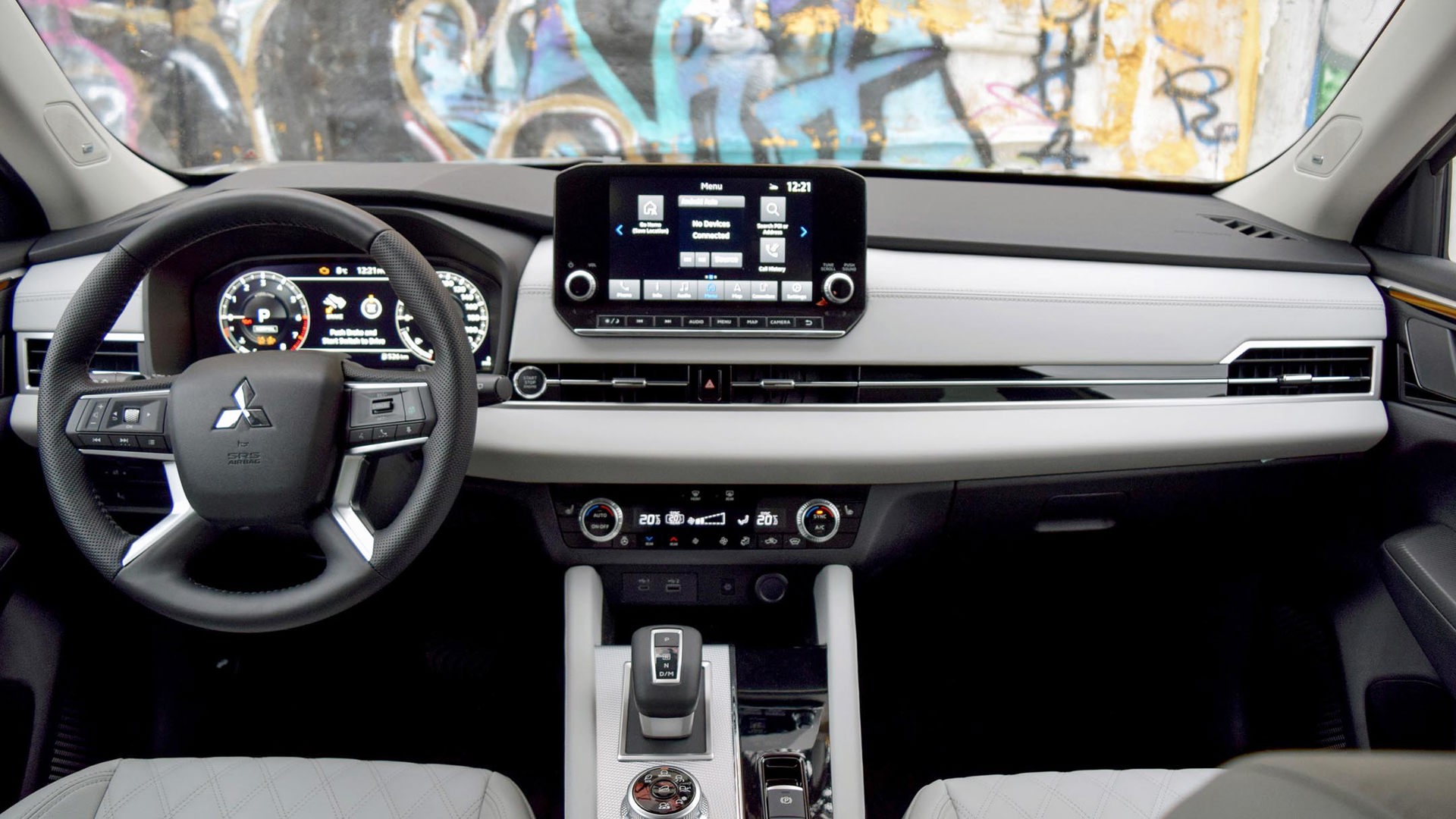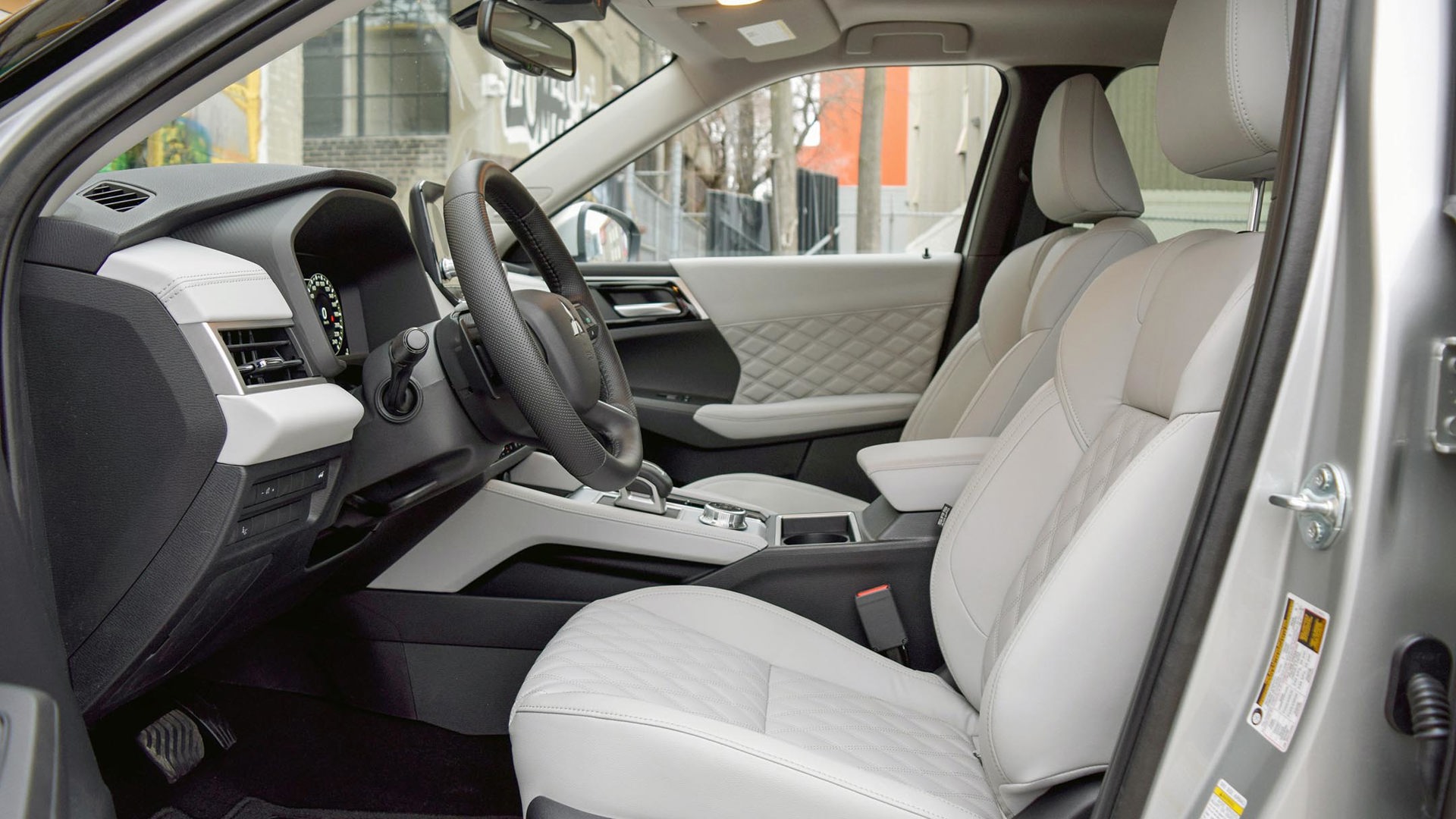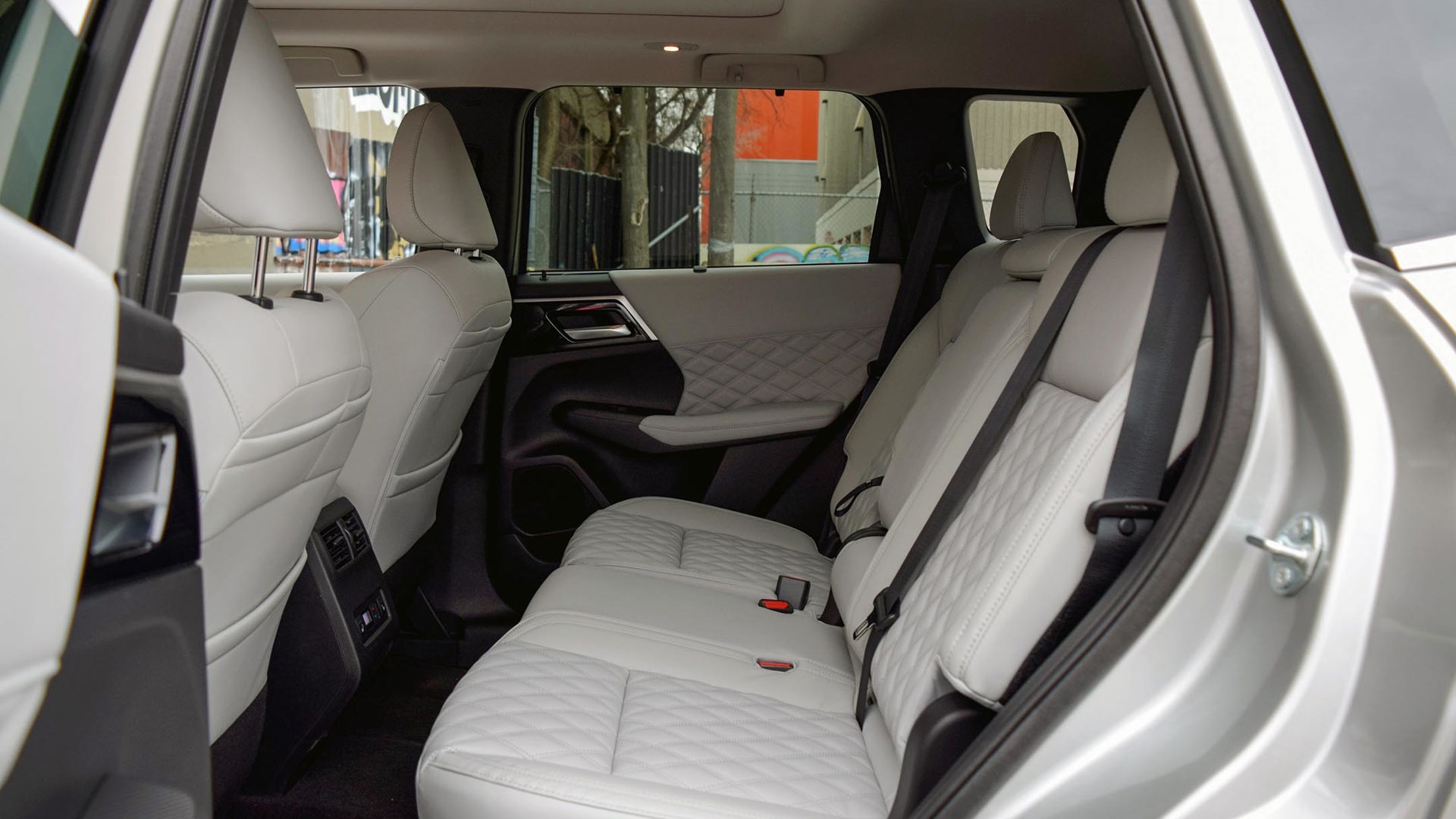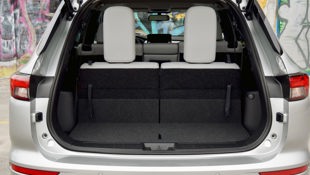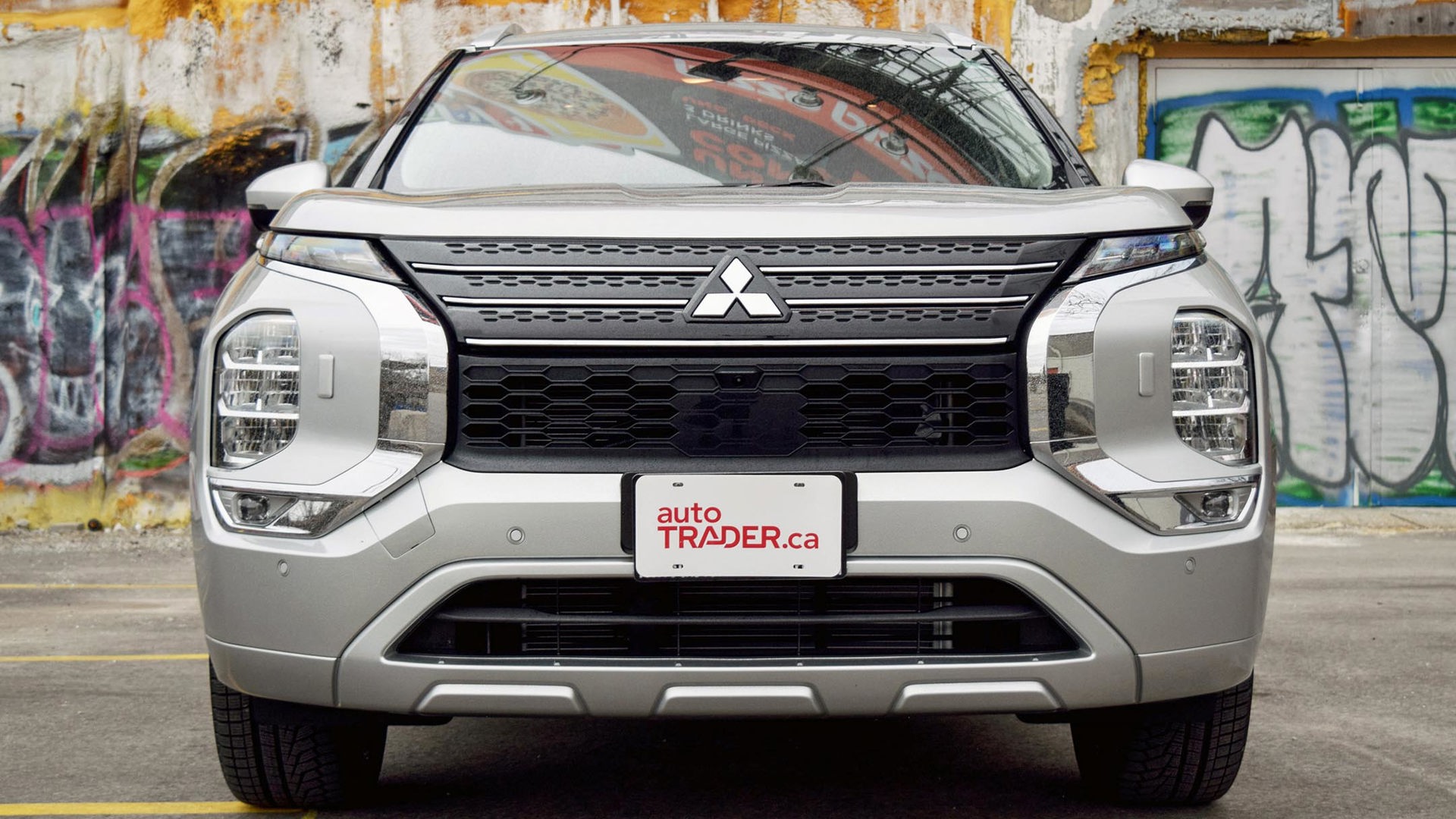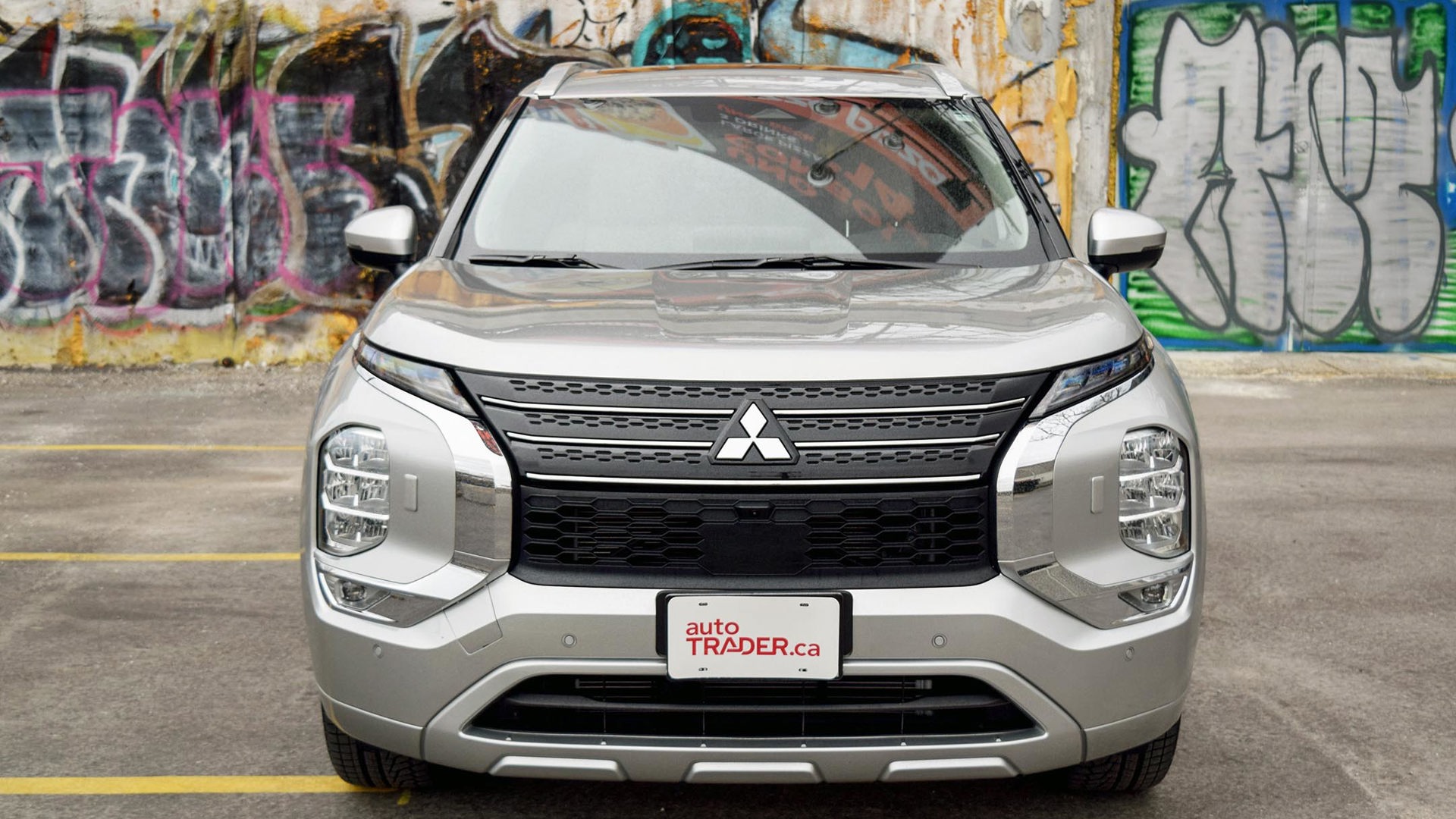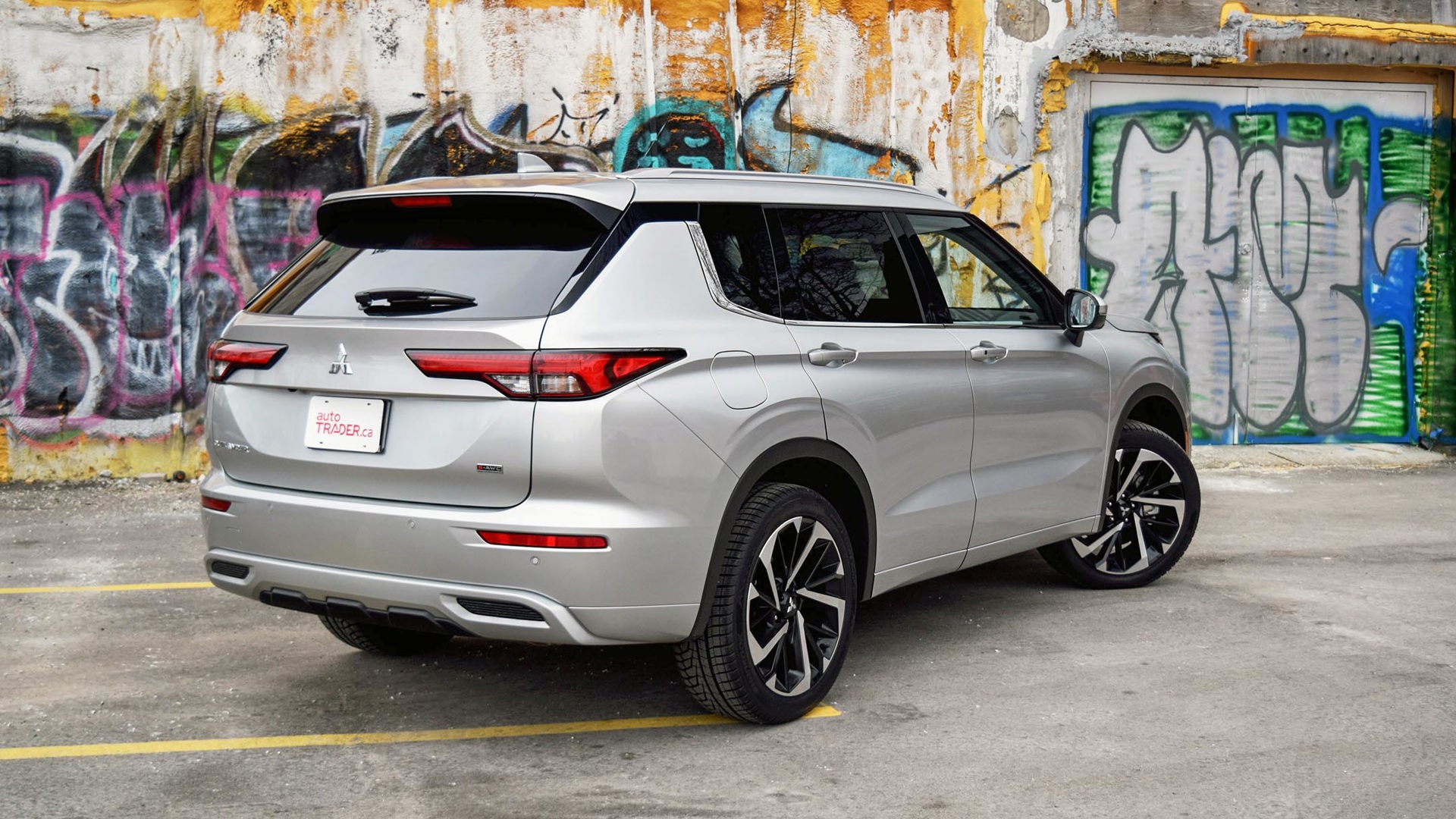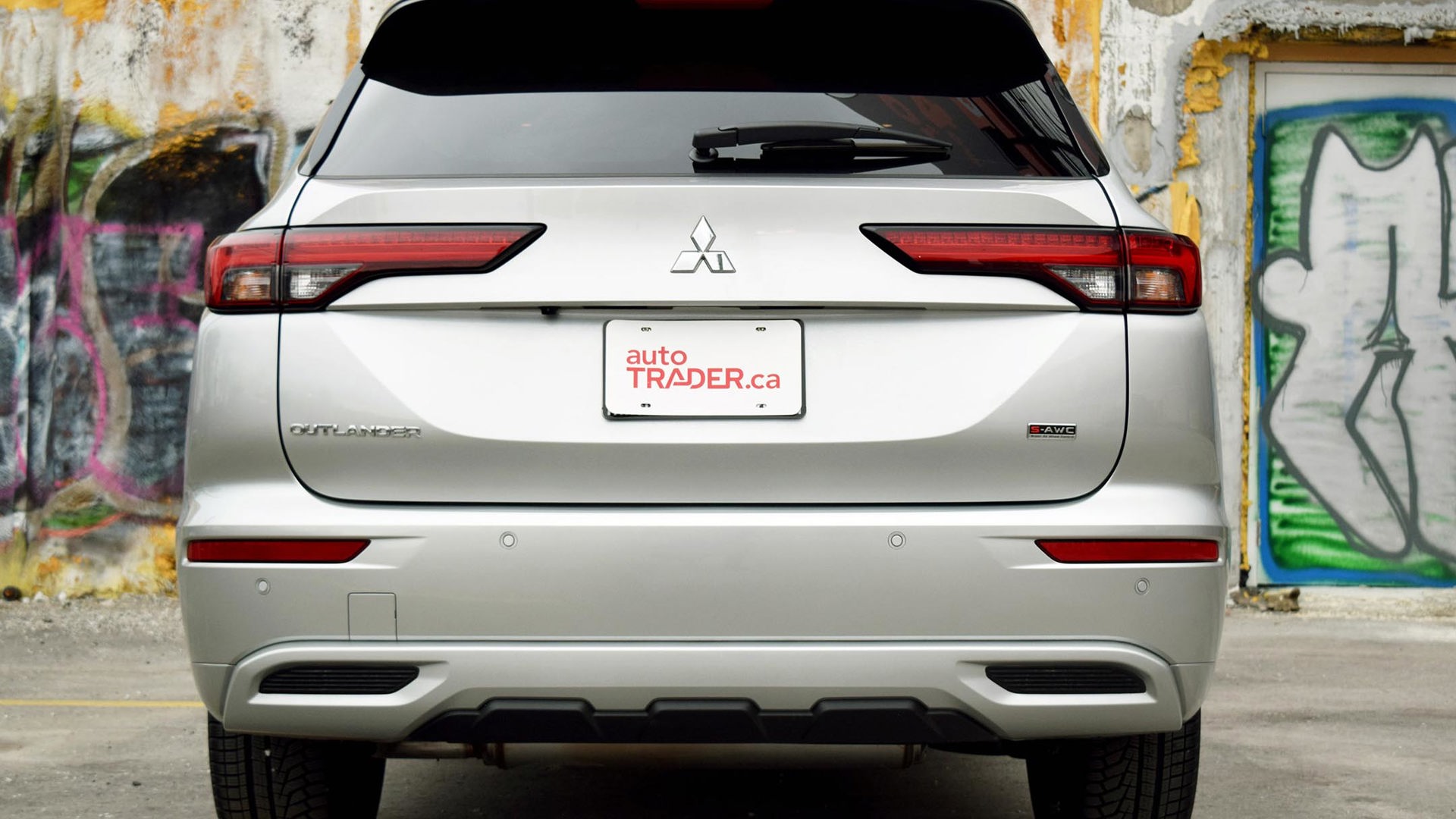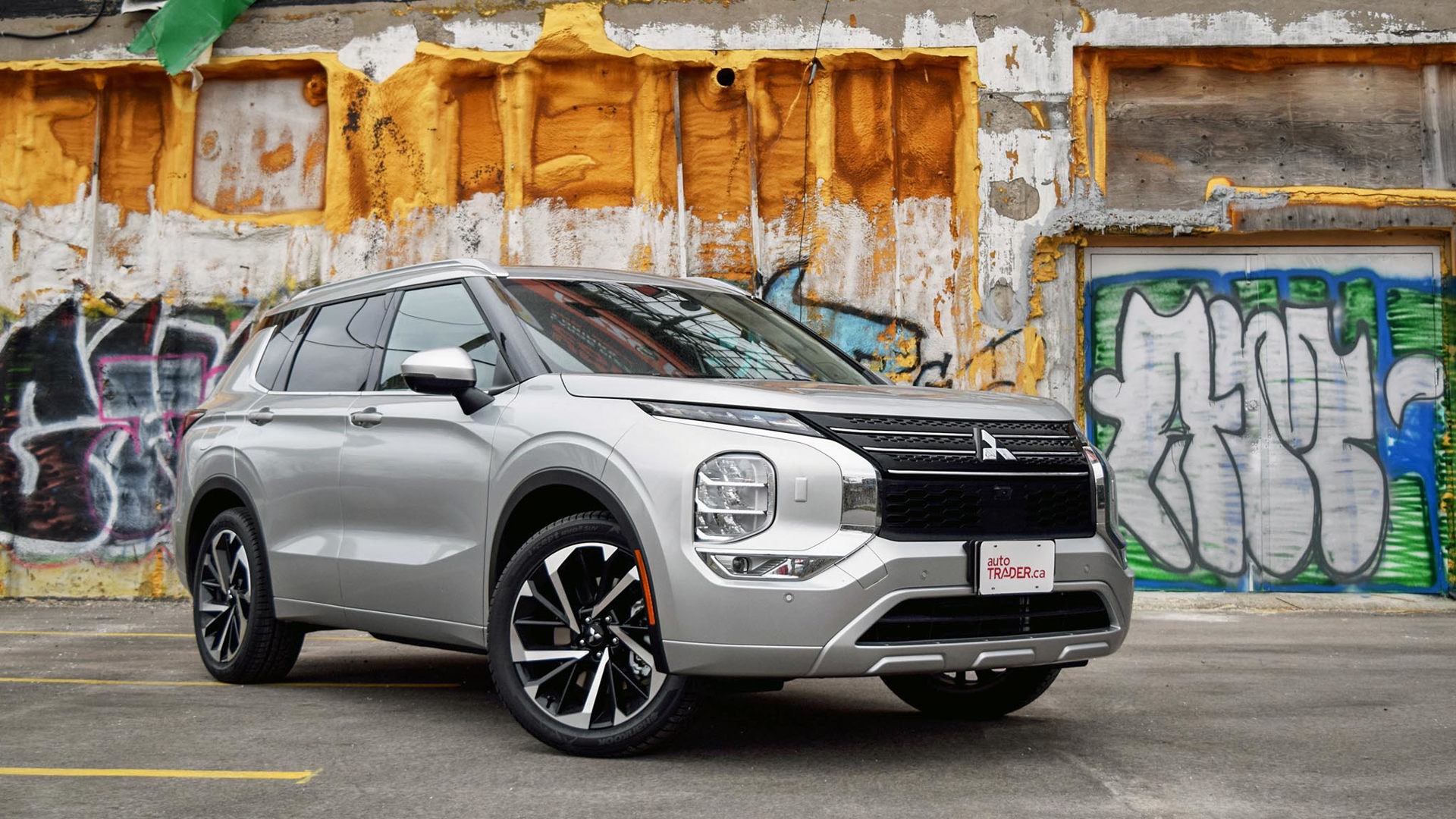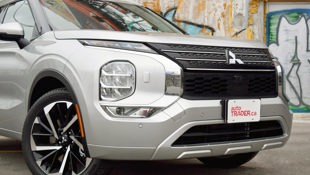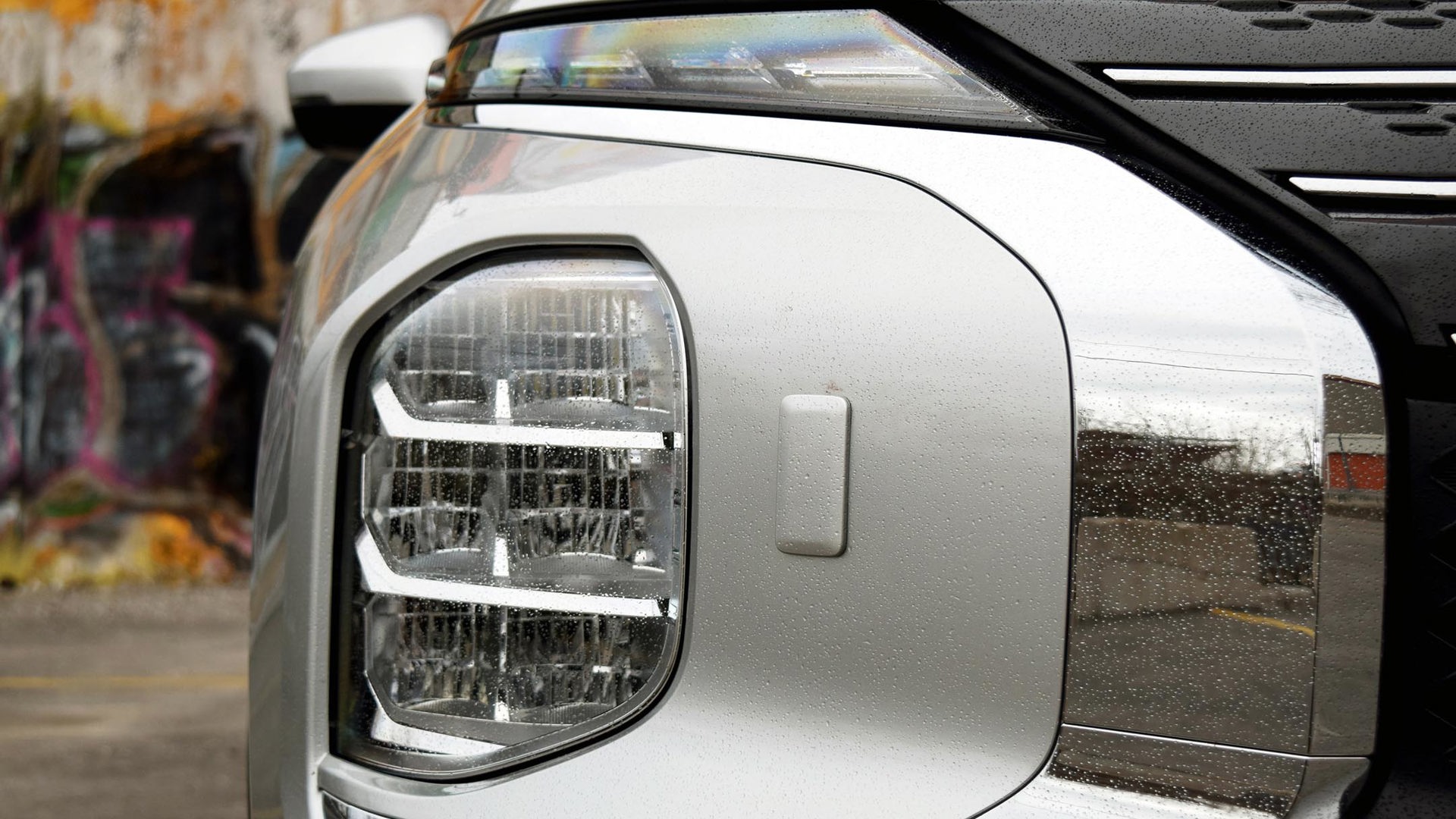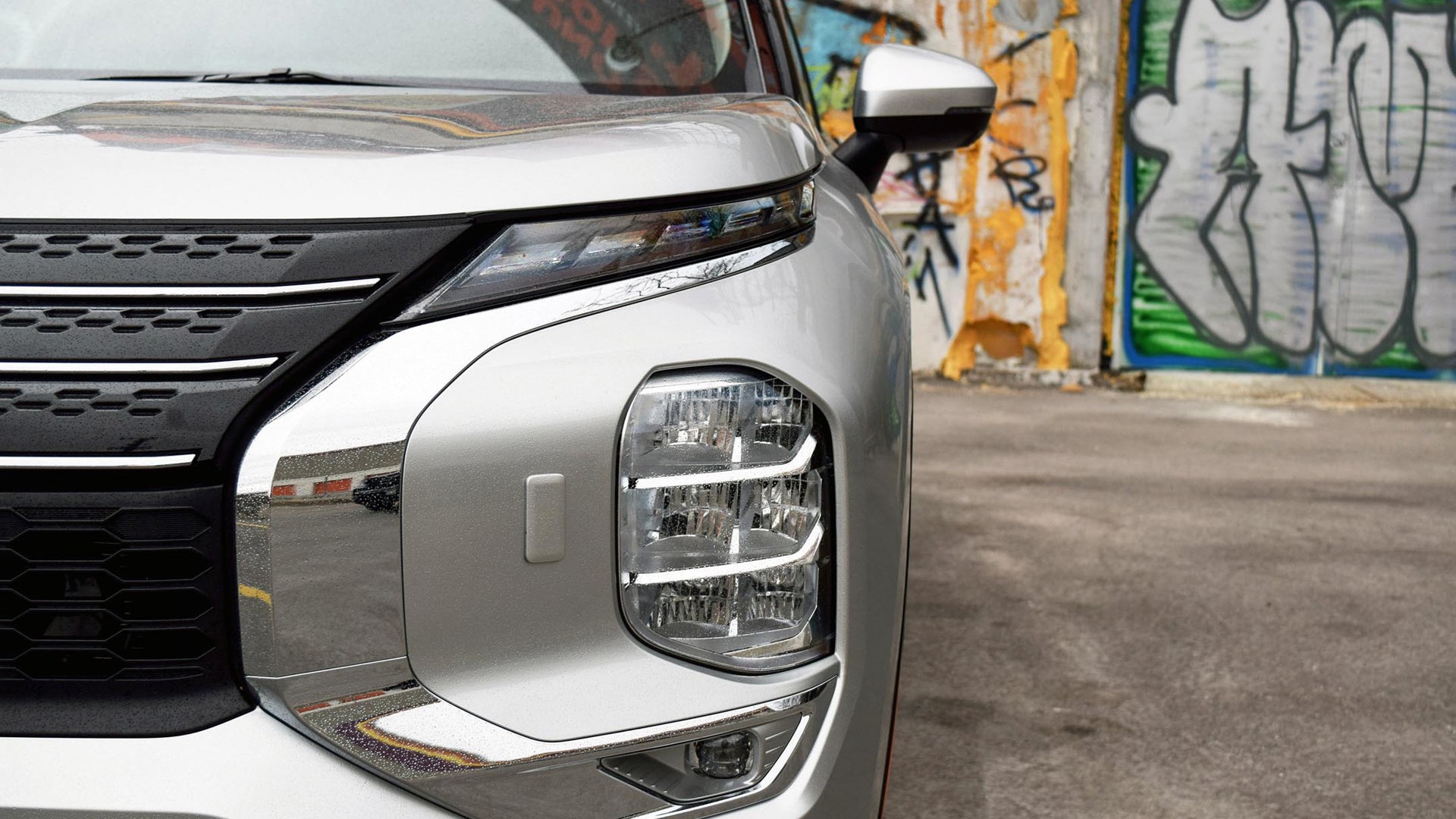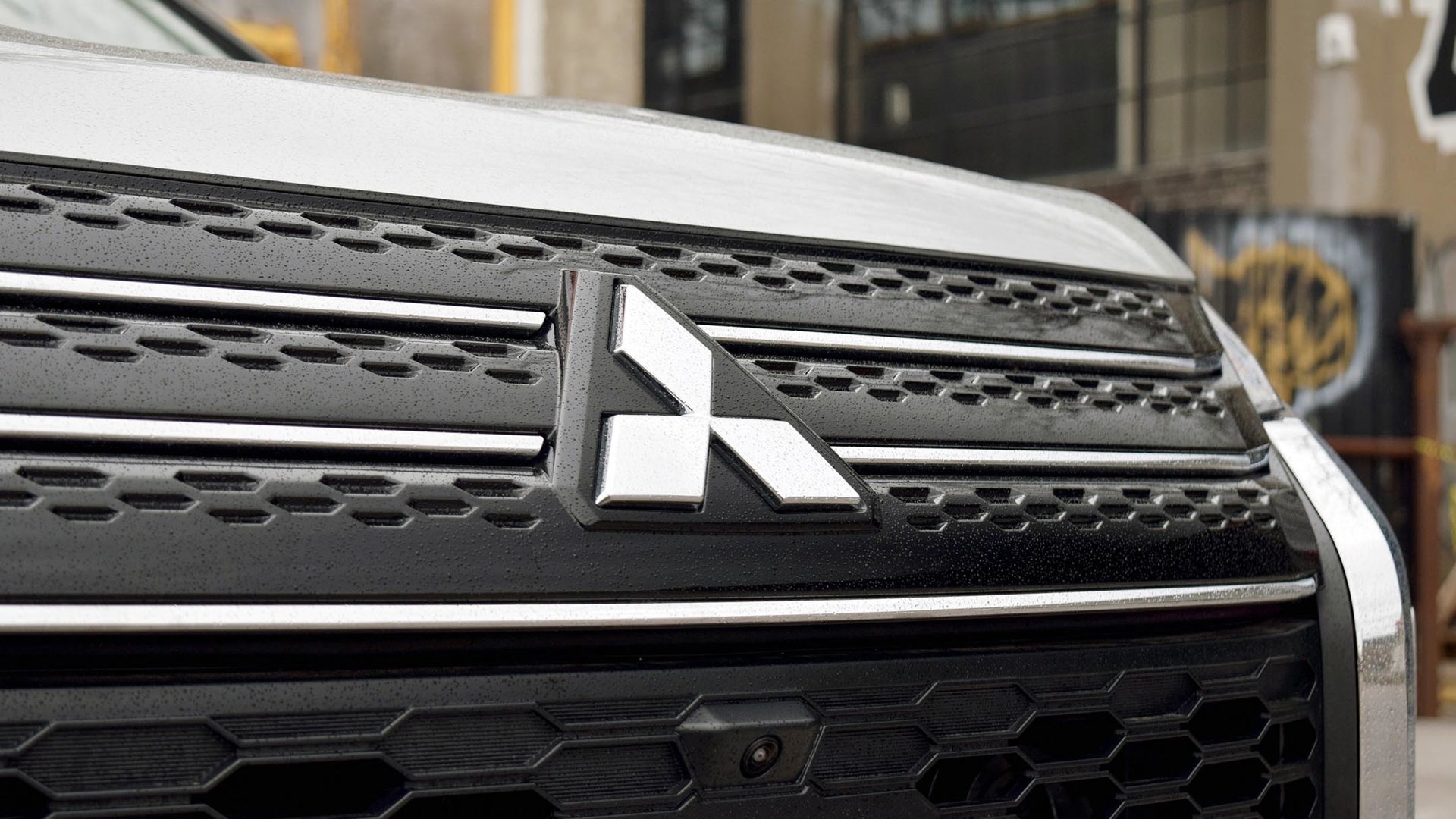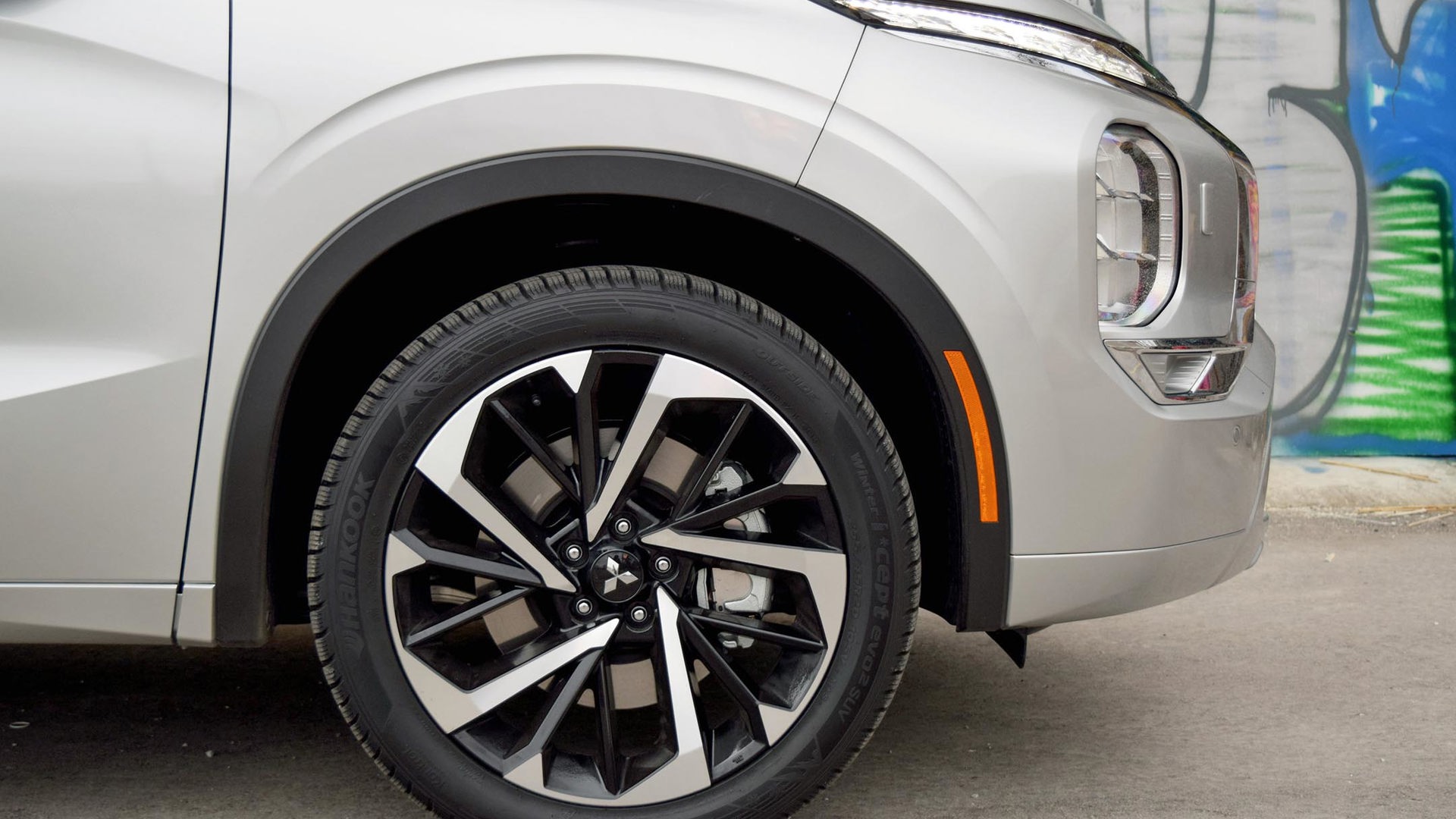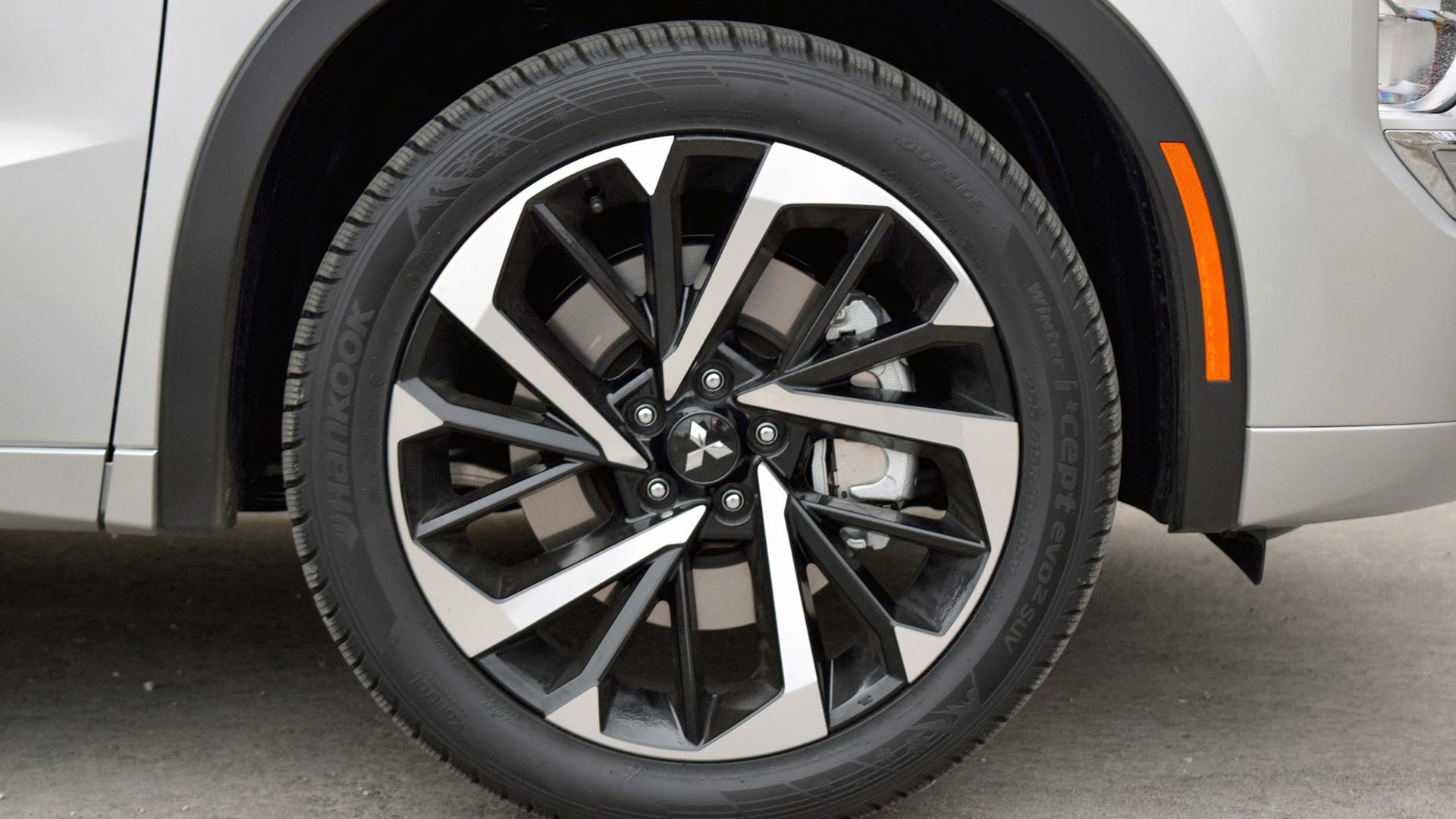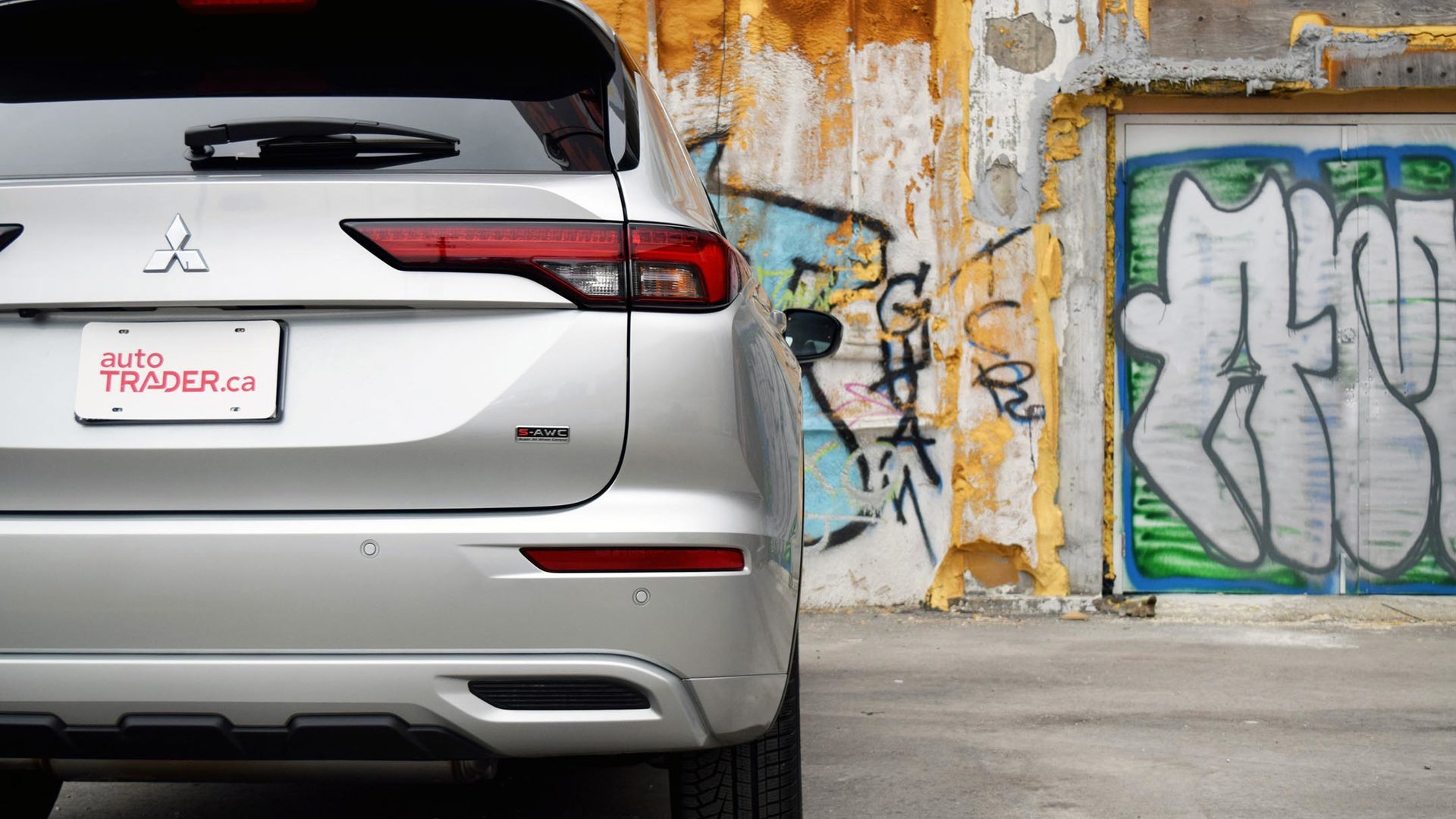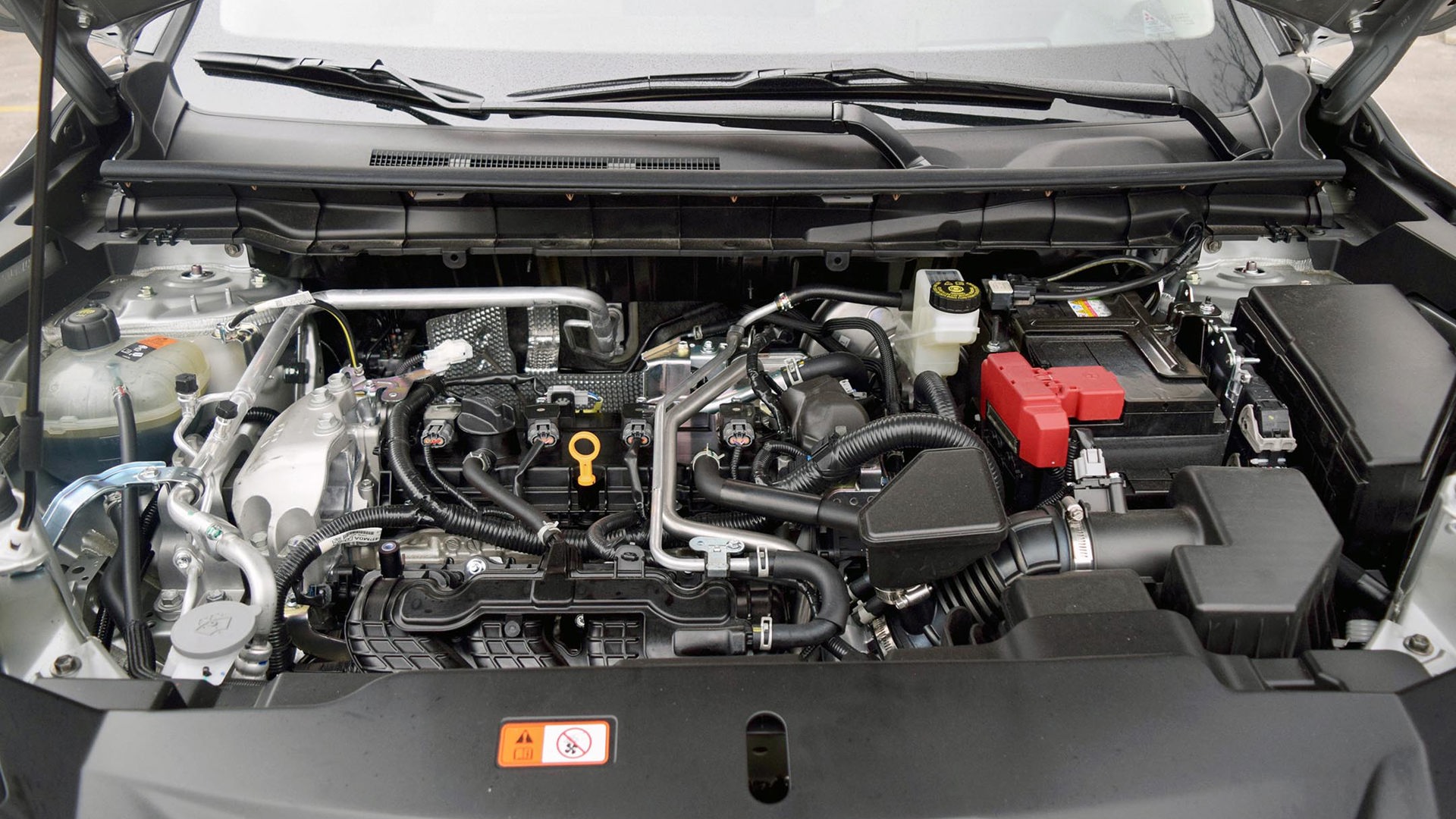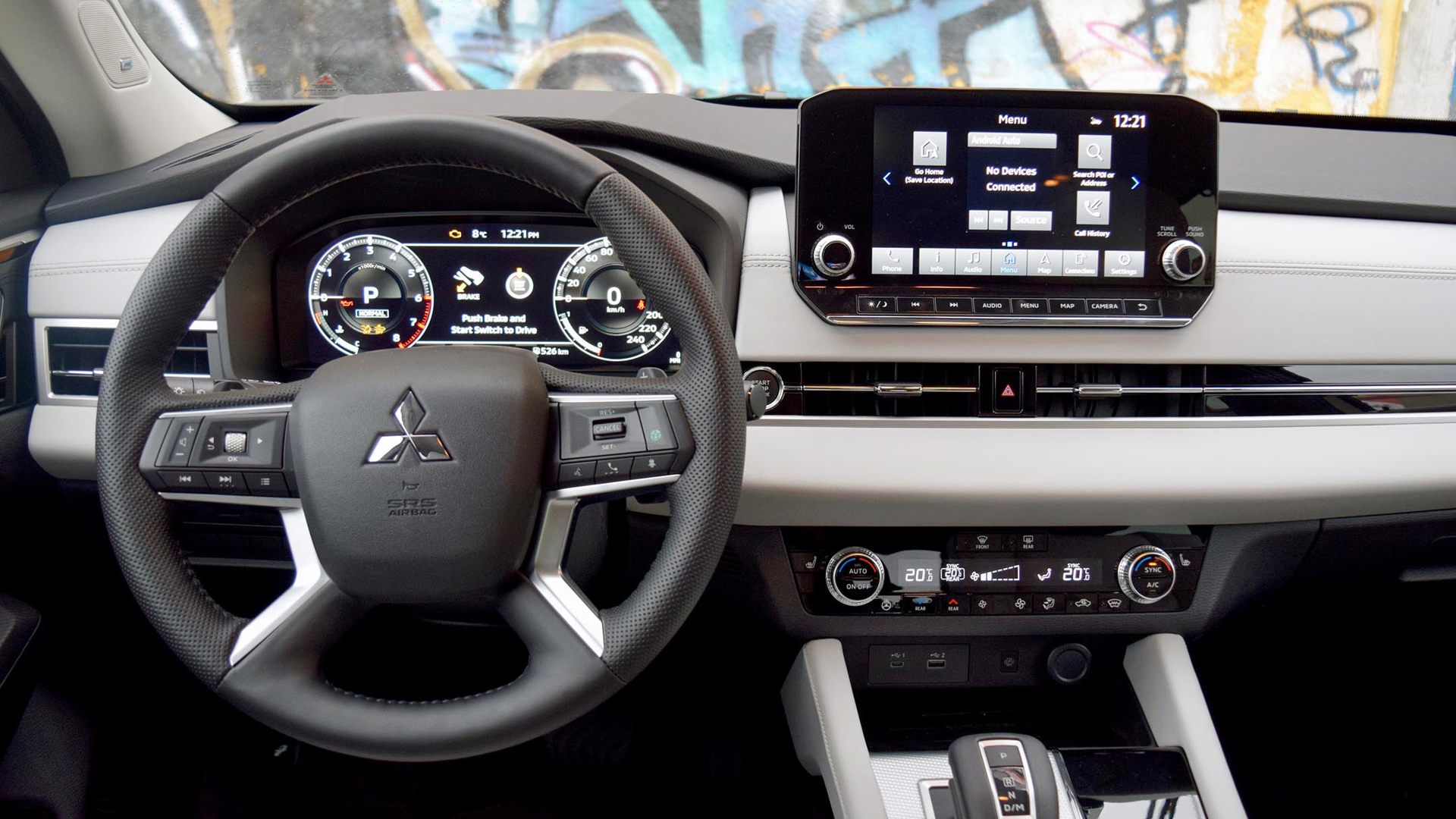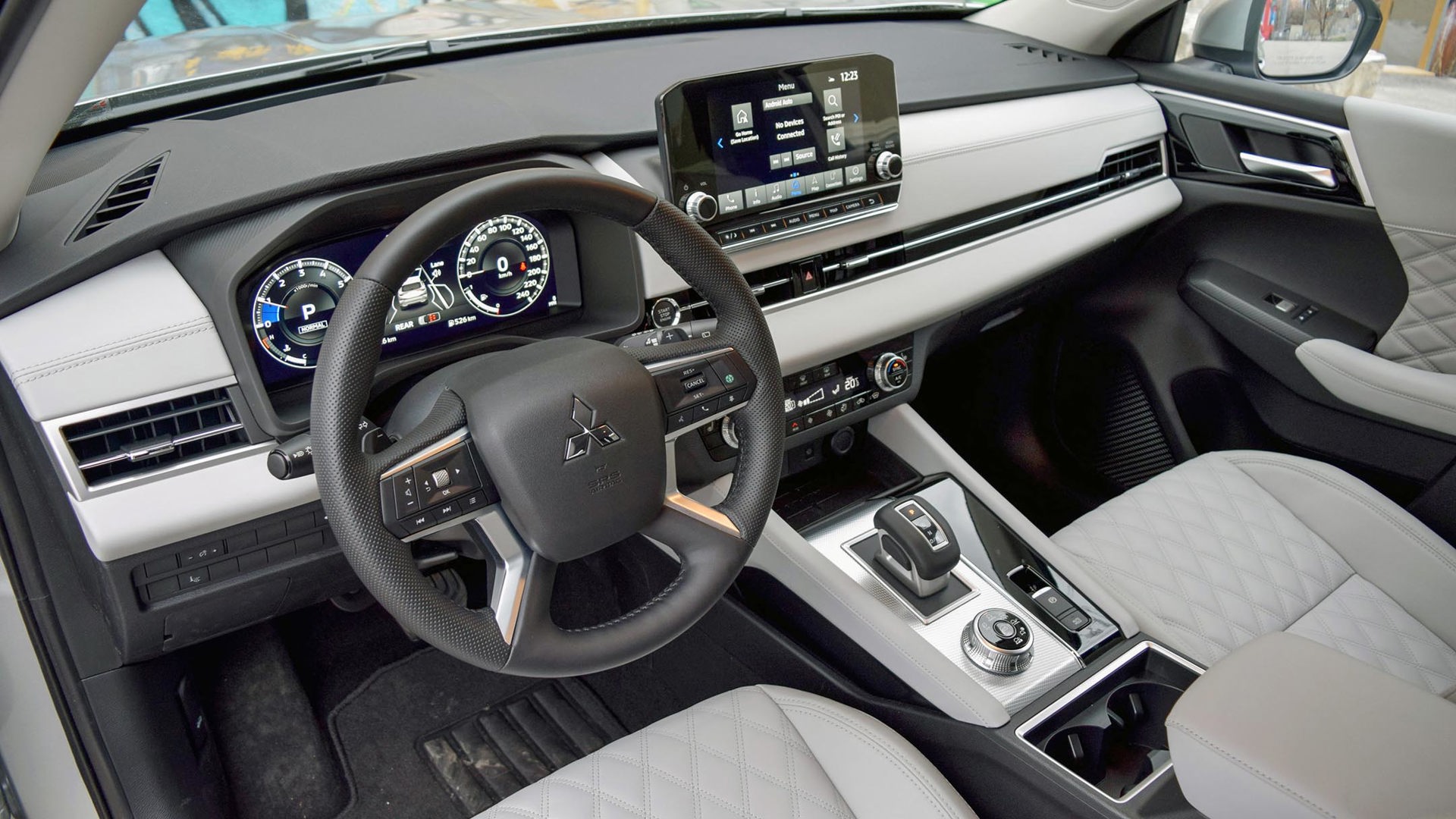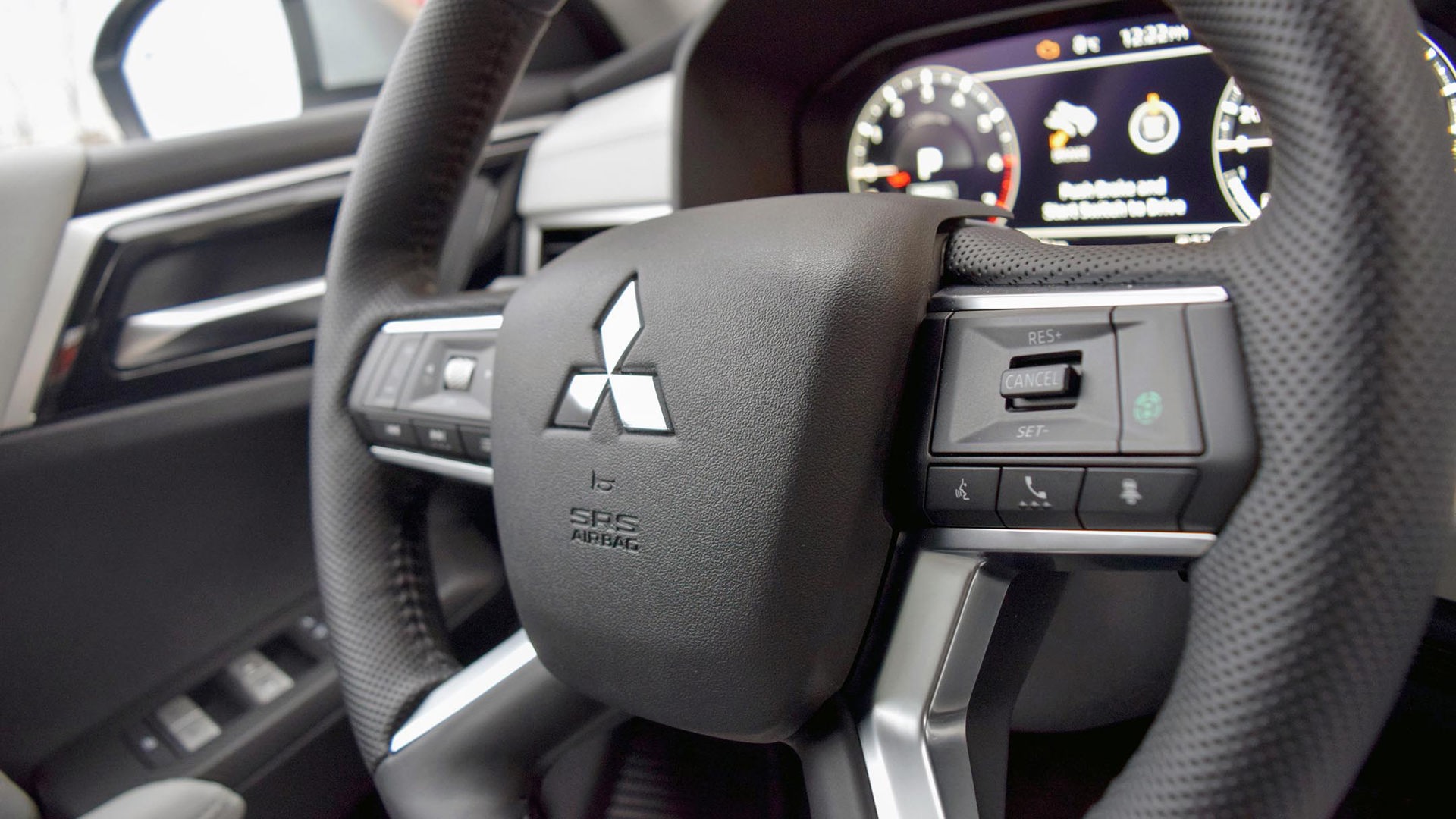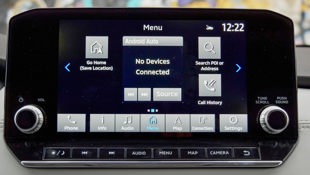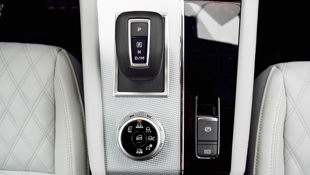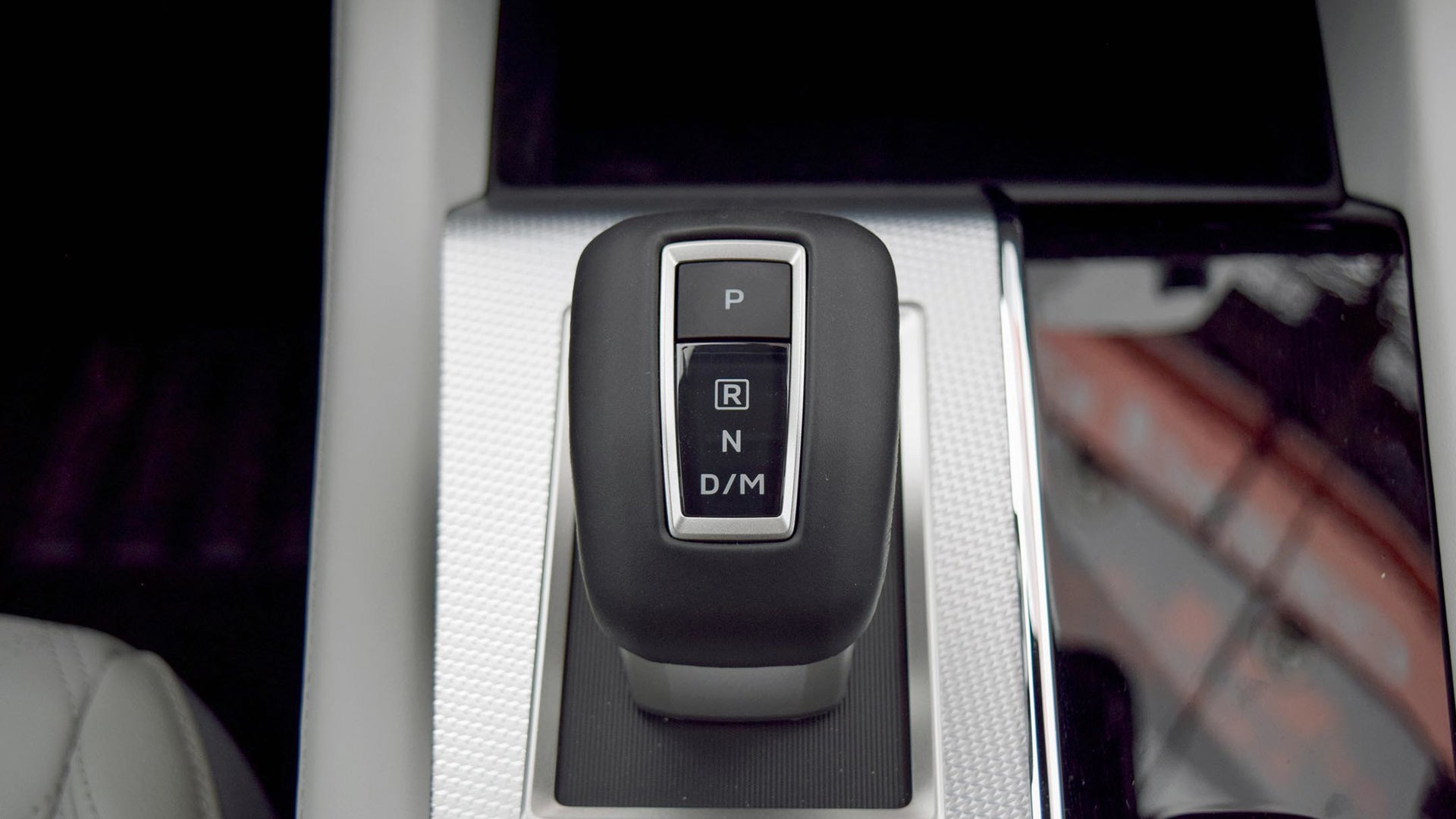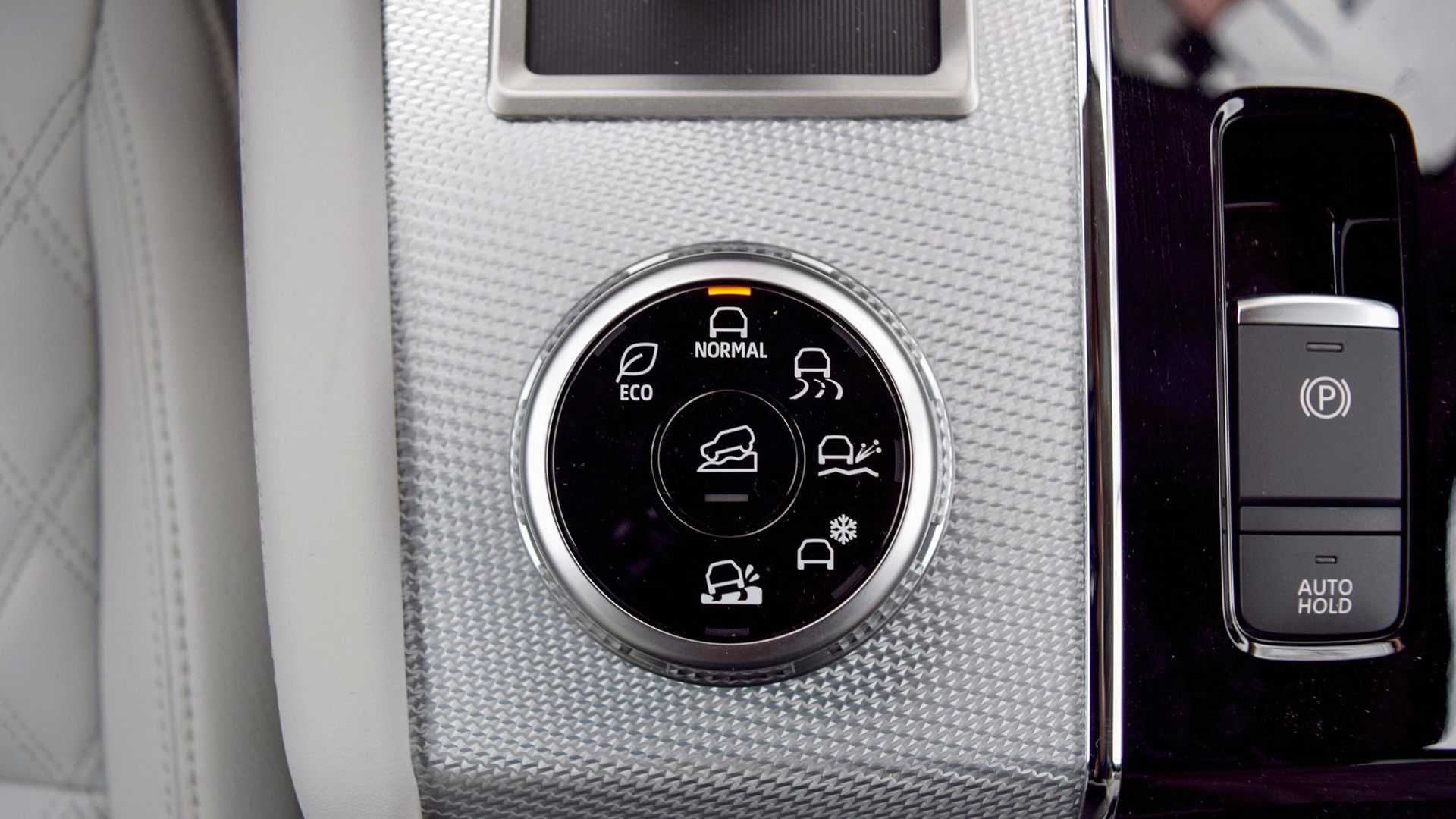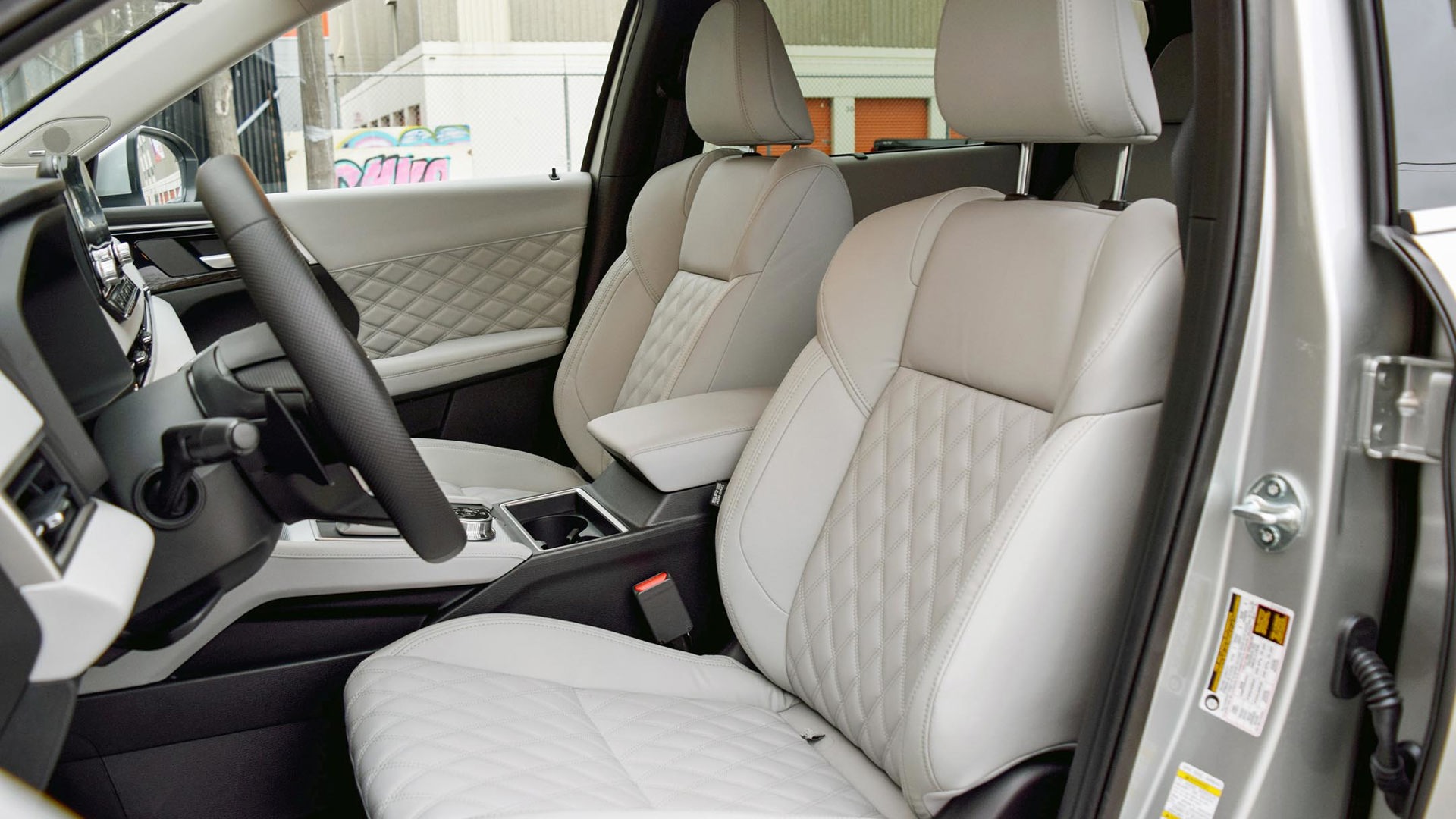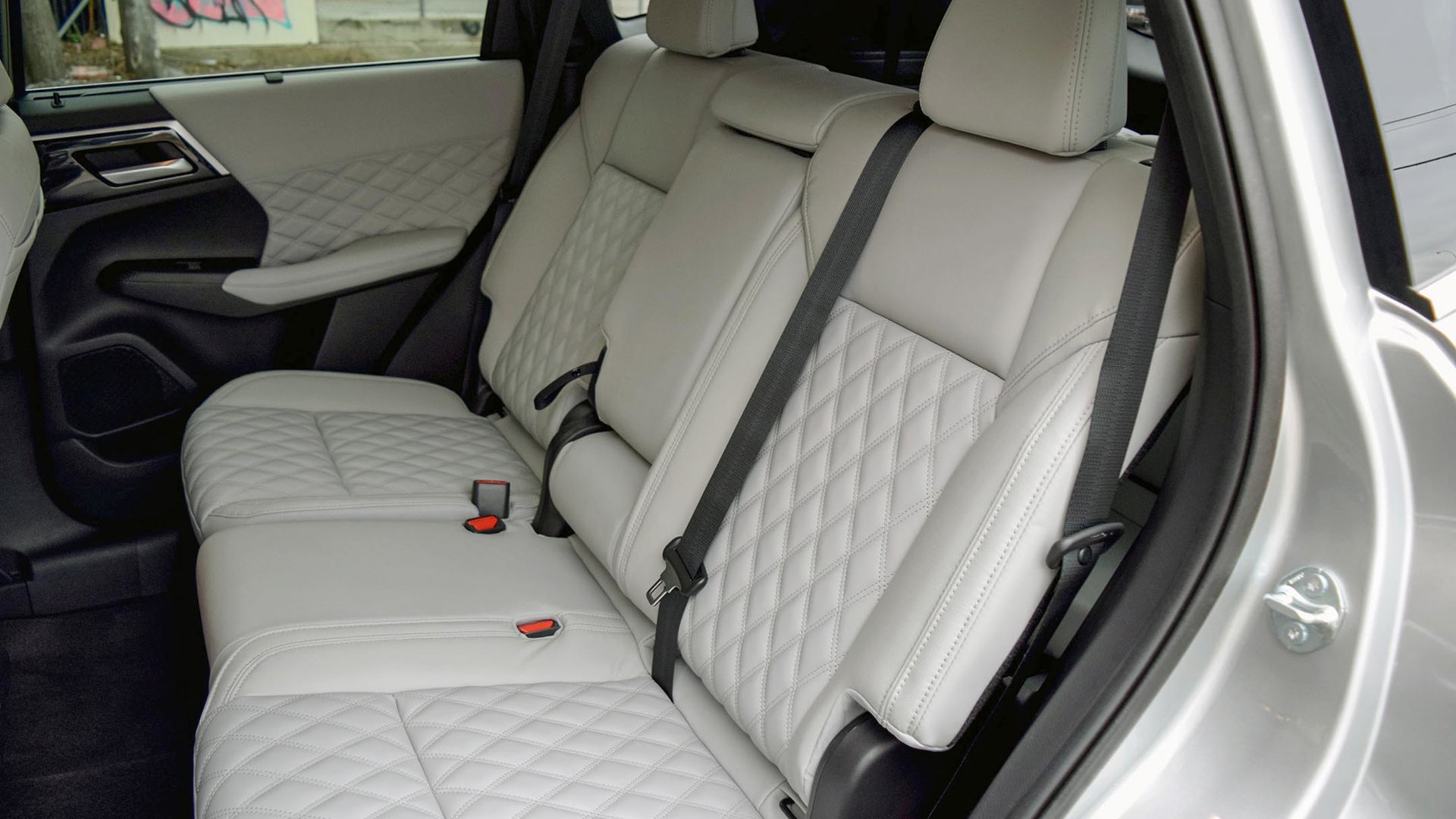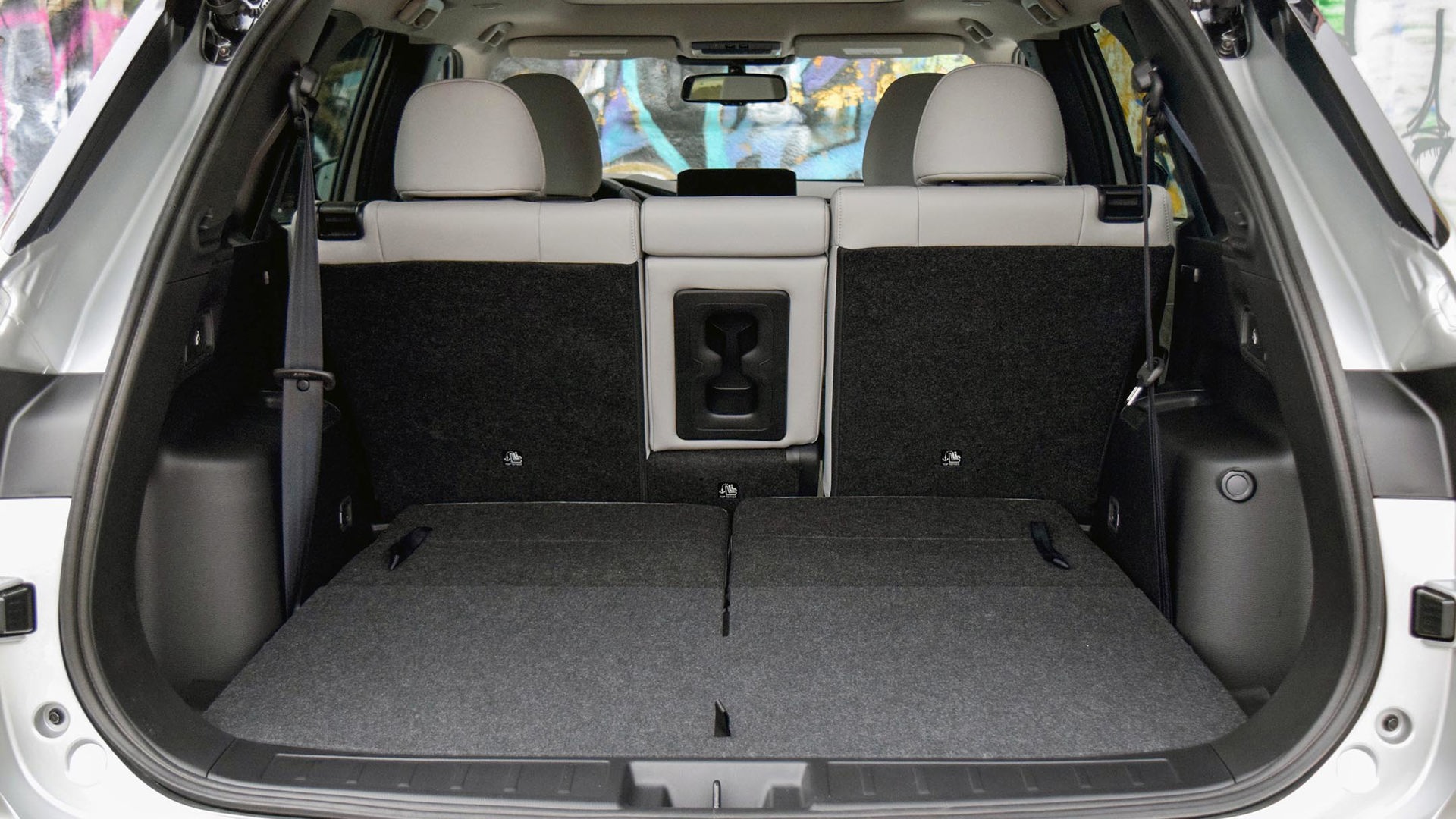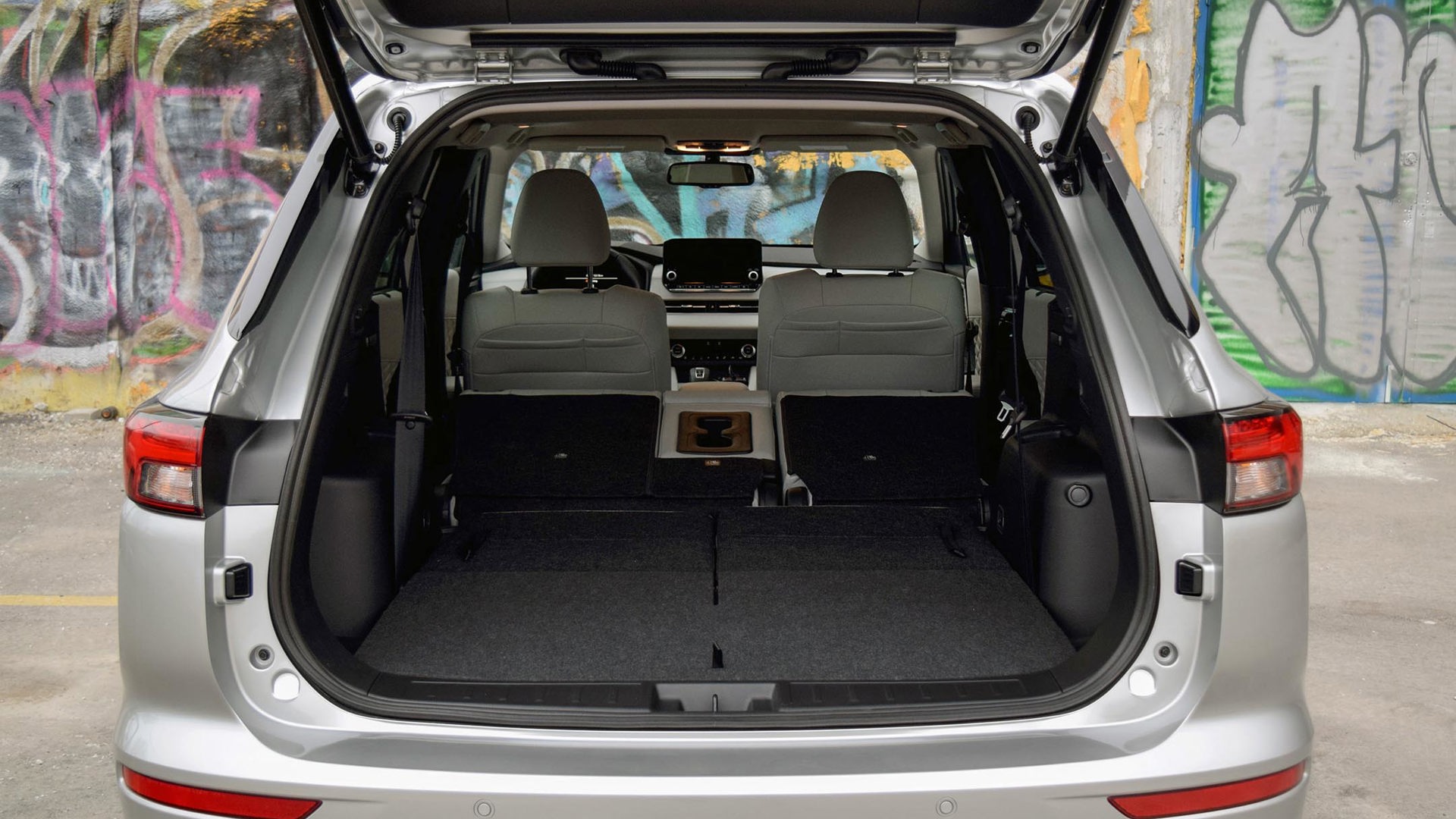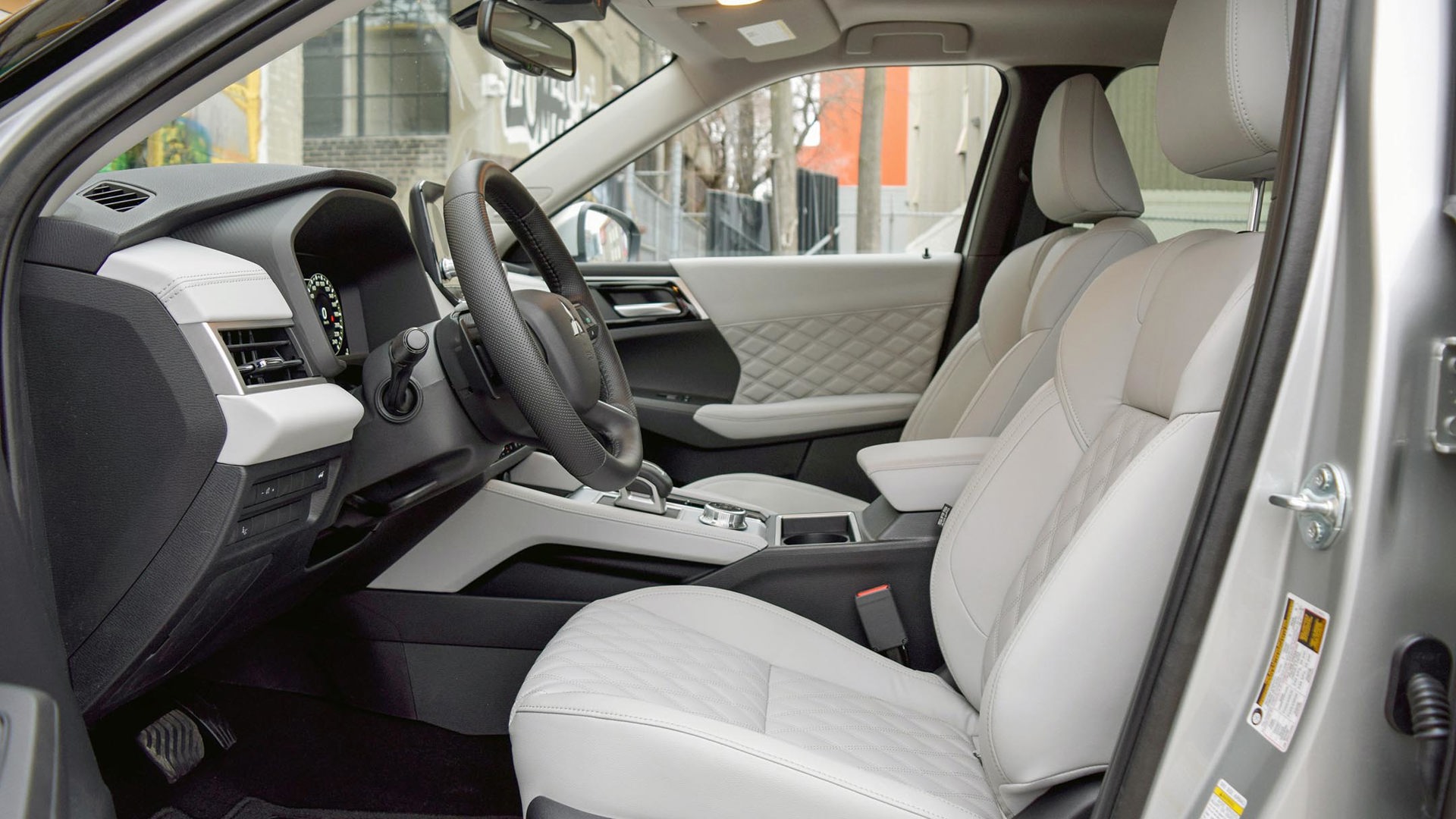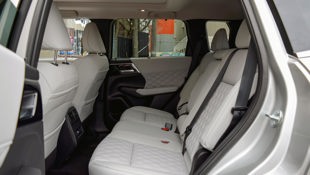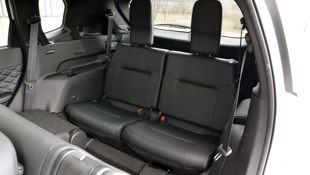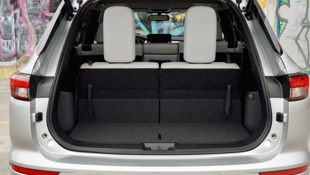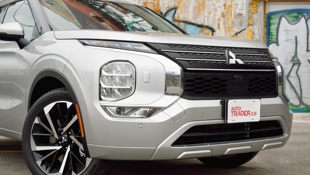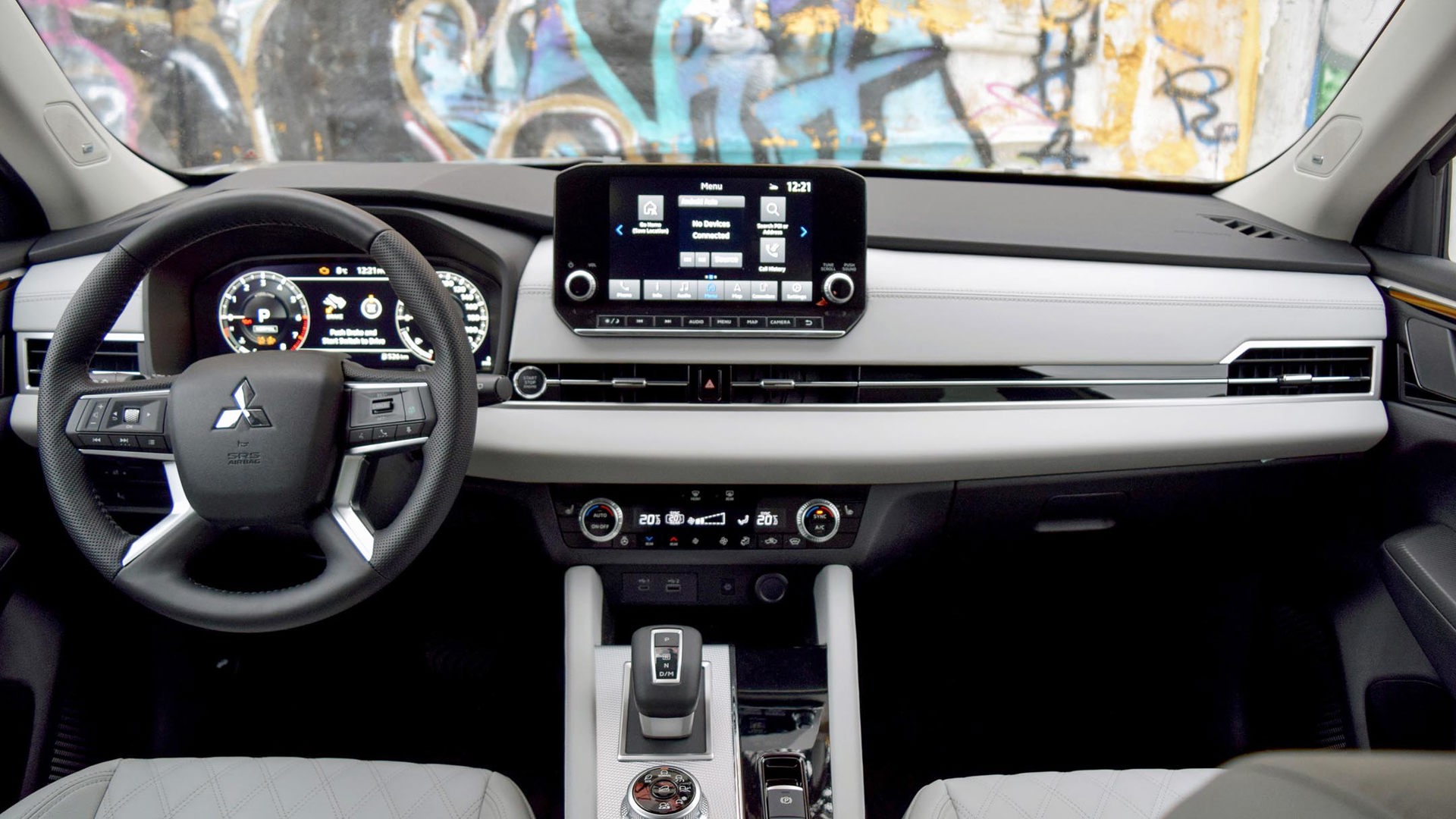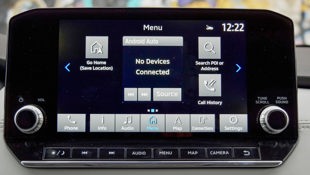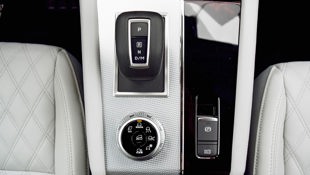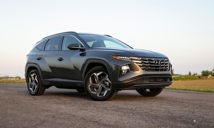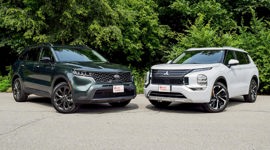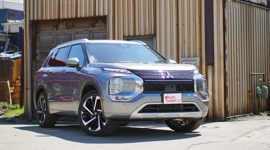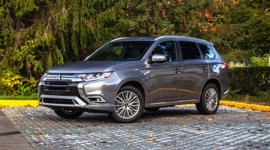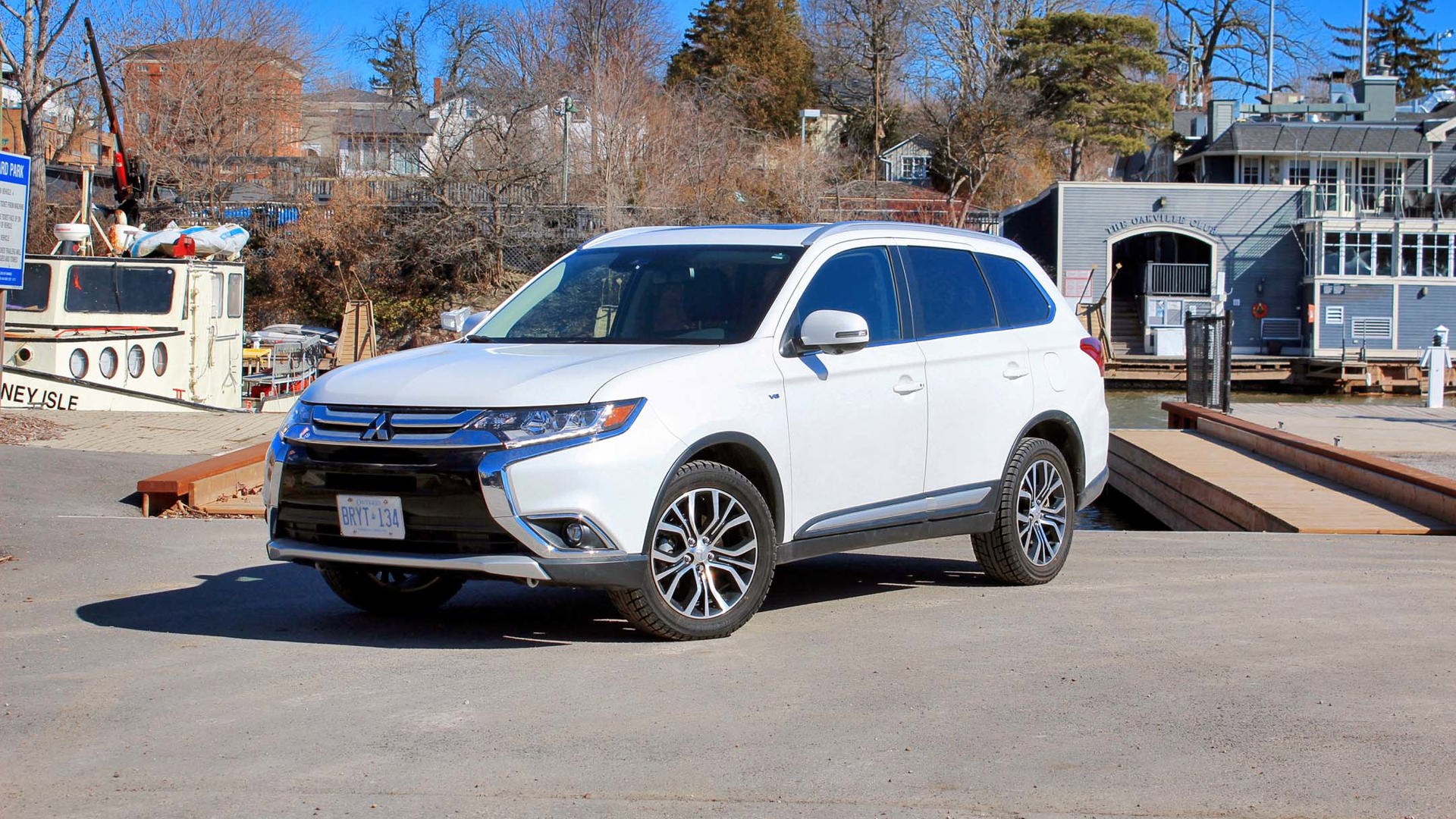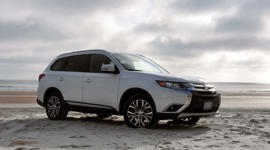When you first spot the 2022 Mitsubishi Outlander you’ll likely experience a whole mix of emotions, uttering to yourself: “That’s a Mitsubishi?”
While the confusion is temporary, the question will linger. Yes, it’s a Mitsubishi, but there’s a clear influence from another source here, which all adds up to a surprisingly strong product in a very competitive segment.
Before you get too excited, the new Outlander isn’t offered as a plug-in hybrid (PHEV) yet. The brand gained serious momentum around the world with its affordable and well-incentivized third-generation PHEV – which will be sold alongside the all-new fourth-generation Outlander, looking decidedly dated inside and out.
Unique Design
The new Outlander has a busy exterior design, with slim daytime running lights and turn signals bordering the hood, flanked by chrome cheeks and large headlights surrounding an aggressive-looking grille. The side profile features the usual rugged-looking, chiselled shoulder- and hip lines, while the rear is perhaps the least distinct, with slim taillights and exhaust cutouts.
However, if anything the new Outlander looks distinct, which is a rarity in this segment where there are a significant number of blob-like designs like the Honda CR-V, Ford Escape, Kia Sportage, and Jeep Cherokee. But the new Outlander looks big. That’s due to the wider track and longer wheelbase, but don’t downplay the 20-inch wheels that top-trim models sport, either. Wheels of this size are rare in the segment, as they can impact ride quality, and the tires are expensive to replace or swap for winter rubber. But the new design language and wheel choices help signal Mitsubishi’s desire to appeal to a different demographic: those who care more about style than expenses.
Segment-Exclusive Third Row
The larger size of the Outlander also enables a key feature that sets it apart from its competition: it’s a seven-seater. Make no mistake, that third row of seating isn’t the most glamorous or spacious, but it’s there and may prove useful to shoppers who have very specific requirements.
While the third row isn’t a great place to spend a lot of time, the rest of the cabin is a significant step up from the Outlander that came before this. Top-trim models have attractively styled upholstery with a diamond-stitched pattern. The door panels and textured trim pieces don’t feel cheap or flimsy, while the chunky steering wheel feels reassuring and rugged. There’s a generous amount of legroom in the first- and second rows, adding to the upscale nature of the Outlander, while available rear sunshades help the crossover maintain its practical mindset. Headroom is perhaps my biggest complaint in the second row.
Cargo room is improved by the wider track and longer wheelbase, with 331 L of space behind the third row, 949 L behind the second row, and a maximum of 2,257 L of space when the second- and third rows are folded. There’s also a small cubby beneath the cargo floor for storing the third-row headrests or cargo cover. Mitsubishi even sped up the power tailgate compared to last time around. Furthermore, the cabin is full of smart storage details, like areas for bottles as well as pouches for tablets and phones in the seatback pockets and centre console.
Tons of Safety Equipment and Driver Aids
To further demonstrate how much Mitsubishi has levelled up with the new Outlander, this fully loaded model had an impressive list of features and technology. There are several screens and displays loaded with information, like the attractive 12.3-inch digital gauge cluster, the 10.8-inch head-up display projected on the windshield, and a nine-inch central infotainment screen that includes Android Auto and Apple CarPlay support. There’s also a wireless phone charger, three-zone climate control, heated seats in the first- and second rows, and a heated steering wheel.
Naturally, the feature list continues with safety and driver aids, with the Outlander boasting a well-rounded suite of technology. Blind-spot monitoring, rear cross-traffic alert, lane-departure warning, forward and rear collision alert, and rear parking sensors are all standard, with adaptive cruise control and lane-keeping assistance found on higher trim models.
Average but Versatile Powertrain
Even the drivetrain offers a few features of its own, with hill descent control (essentially off-road cruise control), six different drive modes, and paddle shifters to swap the continuously variable transmission (CVT) through eight pre-set gear ratios. The drive modes – eco, normal, mud, snow, gravel, and tarmac, which functions like a sport mode – adjust how responsive the engine behaves, as well as how eager the stability and traction control systems are to intervene when slip is detected.
The 2.5L four-cylinder engine makes 181 hp and 181 lb-ft torque, which is about average for the class. It’s adequate and the CVT does a good job of humming along quietly without complaint during normal driving, and kicking the engine into working overtime when passing on the highway. Mitsubishi’s staple all-wheel drive system is here, too, and incorporates an active braking component to better control the torque being sent to the wheels. The Outlander felt reasonably confident on the winding roads during testing in cold but dry conditions.
Pour one out for the V6-equipped Outlander, which is gone for good despite nearly a quarter of its predecessors being sold with a six-cylinder. That engine would have helped improve the tow rating of the new model, which is capped at 907 kg (2,000 lb). Buyers will have to wait for the PHEV for a more powerful version of this crossover.
Fortunately, the new model is reasonable in terms of fuel consumption, returning official averages of 9.7 L/100 km in the city, 7.9 on the highway, and 8.9 combined.
20-Inch Wheels With Few Compromises
On the road, the Outlander is compliant and easy to drive. Big windows work with large mirrors to minimize blind spots, and the driver aids provide plenty of confidence in various conditions. The steering is a little light at parking lot speeds but feels a bit more reassuring when the speeds pick up. And those worries about 20-inch wheels impacting the ride were swept away as the Outlander seems properly tuned to use those big wheels. Body lean is well controlled, and the ride isn’t too stiff. Major kudos to the automaker for delivering a balanced ride.
The Secret Behind the Success?
The various components of the Outlander add up nicely, but there’s a hidden secret to the new crossover. It sports Nissan roots, a result of the Mitsubishi joining the Nissan-Renault alliance in 2016. The platform and drivetrain used by the Outlander also underpin the new Nissan Rogue; the interiors are similar but with different dashboard designs and button placements. As a result, these two slightly similar dishes made with almost identical ingredients.
Fortunately, the new Rogue is an excellent starting point for a crossover. Mitsubishi having access to the platforms and technologies of the alliance is a win for the brand and its loyal shoppers. Those seeking a longer warranty and a third row of seating will only find them at the Mitsubishi showroom, but otherwise, the experience will be similar between the two crossovers.
Is the Best Yet to Come?
There are seven trim levels of the Outlander, and each one is offered with all-wheel drive, compared to five trims of Nissan Rogue, which also include front-wheel-drive models. The Mitsubishi starts at $33,898 including the $250 pre-delivery inspection (PDI) and $1,650 freight charges and tops out at $44,078 for the fully-loaded model.
If you think of the new Outlander as a Rogue Plus, then the price makes sense as Mitsubishi offers more than Nissan does in its product. Bigger wheels, a third row, longer warranty and a unique all-wheel drive system means the Outlander is ahead of its platform-mate, though there's reason to wonder if Mitsubishi could have undercut its partner in terms of pricing to make the Outlander a slam-dunk deal.
While the 2022 Mitsubishi Outlander is the best one yet, the fact that it’s so similar to the Rogue dulls that high. A flagship product should be distinctive and unique, and however good the Outlander is, it lacks the superlative aspects of a flagship. However, it may get that designation when the much-anticipated PHEV model finally arrives, bringing the redesign to the brand’s most compelling offering. For now, the Outlander is an acceptable alternative to the already great Nissan Rogue, and that’s not a bad place to be.
